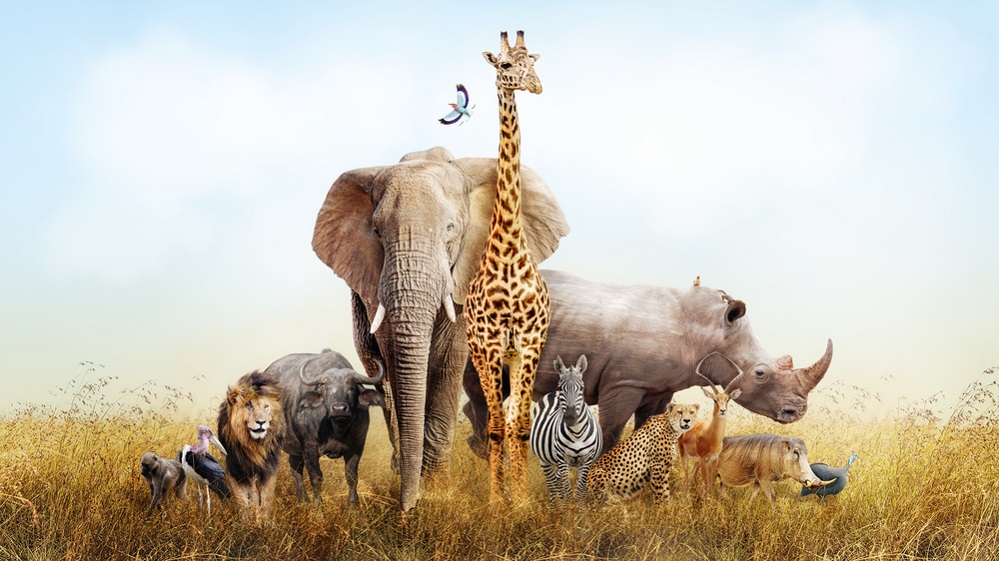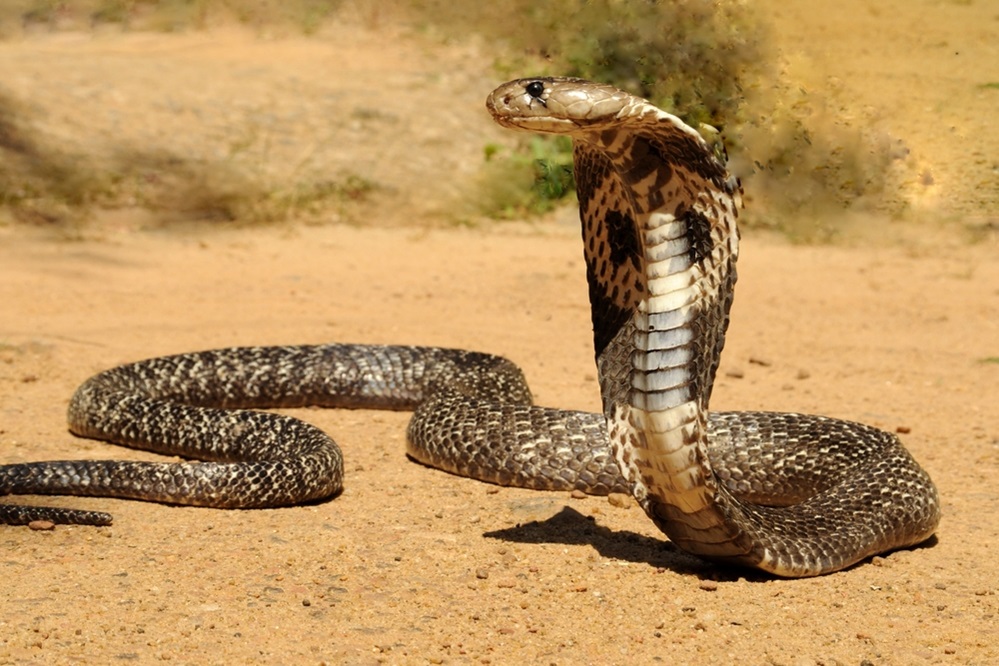Africa, the cradle of humankind and the world’s second-largest continent, boasts a breathtaking diversity of wildlife. From the sprawling savannas teeming with majestic predators to the lush rainforests echoing with the calls of primates, Africa’s ecosystems provide a haven for a staggering number of unique animal species.
This comprehensive list explores over 100 incredible African animals, categorized alphabetically for your convenience.

Table of Contents
Aardvark

The aardvark (Orycteropus afer) is a medium-sized mammal native to Africa, characterized by its nocturnal behavior and burrowing habits. Aardvarks are also known as antbears or earth pigs. Their long, sticky tongues are perfect for licking up ants and termites, their primary food source.
Aardvarks have strong claws for digging and powerful legs for burrowing. They can dig a hole in just a few minutes! They are shy and nocturnal, and spend most of their days sleeping in their burrows. Aardvarks are an important part of the African ecosystem, as they help to control the populations of ants and termites.
Addax

Adapted to survive in one of the harshest environments on Earth, the addax (Addax nasomaculatus) is a truly unique antelope of the Sahara Desert.
These stocky creatures stand around 3.5 feet tall at the shoulder and possess a surprisingly effective defense mechanism against the scorching sun – their long, twisted horns. These spiraling horns, present in both males and females, are thought to help dissipate heat, keeping the addax cool in the relentless desert heat.
Another adaptation for the arid climate is their coat. In the summer, it transforms into a brilliant white, reflecting sunlight and keeping the animal cool. In the winter, the coat thickens and changes to a grayish-brown color, providing some insulation during the cooler months.
Remarkably, addaxes get most of the water they need from the plants they eat, a true testament to their specialization for survival in this unforgiving landscape.
African Buffalo
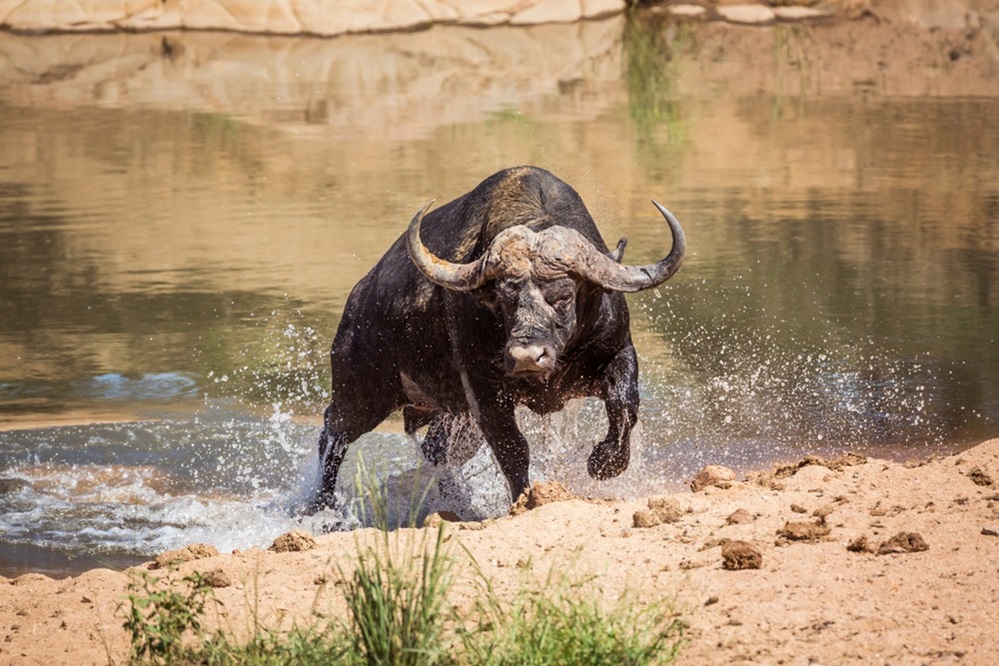
The African buffalo, also known as the Cape buffalo (Syncerus caffer), is a formidable herbivore that grazes the savannas and grasslands of sub-Saharan Africa. These stocky bovines are a vital part of the ecosystem, playing a crucial role in maintaining healthy grasslands and providing sustenance for predators.
Standing up to six feet tall at the shoulder and weighing close to a ton, African buffalo are imposing animals. Their thick horns, which fuse at the base to form a bony shield on the forehead, are a testament to their strength and a necessary defense against lions, hyenas, and other predators. These herds are led by dominant females, with a strict social hierarchy ensuring order within the group.
Despite their size and aggressive tendencies when threatened, African buffalo are actually peaceful grazers, spending most of their days feeding on grasses, leaves, and fruits.
African Civet

The African civet, a secretive inhabitant of sub-Saharan Africa, is often mistaken for a raccoon due to its facial markings. However, this elusive mammal belongs to the Viverridae family, closely related to genets and mongooses.
Despite its medium size, reaching around 40 cm at the shoulder, the African civet is a powerful predator. A solitary creature, it emerges under the cloak of darkness to stalk its prey, which includes rodents, birds, insects, reptiles, and even carrion.
However, the African civet is perhaps most well-known for its unique scent glands near its genitals. This strong-smelling secretion, called civet, was once highly prized in perfumery for its ability to fix and enhance other fragrances.
African Clawless Otter
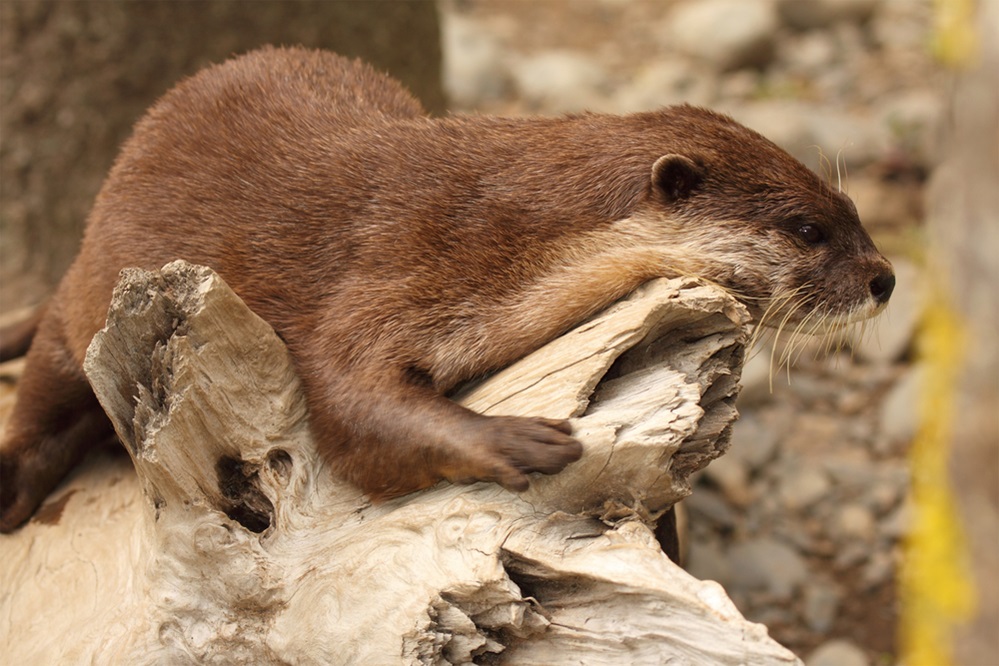
The African clawless otter, a playful resident of freshwater habitats in sub-Saharan Africa, defies expectations with its lack of visible claws. These dexterous otters, sometimes called groot otters (Afrikaans for “large otter”), have webbed paws perfect for gripping slippery prey and navigating underwater.
Unlike solitary hunters, African clawless otters are social creatures, living in playful family groups of up to 14 individuals. Their days are filled with energetic activities like wrestling matches, synchronized swimming, and cooperative hunting. This teamwork is crucial for catching their prey, which consists mainly of fish, crabs, frogs, and aquatic insects.
African Elephant

Reigning supreme as the largest land animal on Earth, the African elephant is a gentle giant that shapes and maintains sub-Saharan African ecosystems. These awe-inspiring creatures stand an impressive 10 to 13 feet tall at the shoulder and can weigh up to 7 tons.
Their most iconic features are their large, floppy ears that help regulate body temperature and their elongated tusks, which are modified incisor teeth. Despite their immense size, African elephants are herbivores, spending a significant portion of their day grazing on grasses, leaves, fruits, and bark.
Their remarkable tool is their versatile trunk, an extension of their upper lip and nose. This powerful and dexterous appendage allows them to breathe, smell, grasp food, water themselves, and even communicate with other elephants.
Living in close-knit, female-led herds, African elephants exhibit complex social behaviors and deep emotions. Their intelligence is evident in their problem-solving skills, memory, and capacity for grief and empathy.
African Fish Eagle

Soaring majestically above African waterways, the African fish eagle is a symbol of freedom and wilderness. This impressive bird of prey isn’t just a visual spectacle with its white head and chest contrasting sharply against its rich brown body and black wings; it’s also an expert hunter with a piercing cry that echoes across the continent.
Often referred to as the “voice of Africa” for its loud, high-pitched call, the African fish eagle uses its keen eyesight to spot prey from high perches near lakes, rivers, and coastlines.
With a powerful dive and lightning-fast reflexes, it snatches fish from the water’s surface, but its diet can also include small mammals, birds, and reptiles, showcasing its adaptability as an apex predator in its aquatic domain.
African Golden Cat

Shrouded in mystery due to its nocturnal habits and solitary nature, the African golden cat is a secretive predator dwelling within the dense rainforests of West and Central Africa.
Often mistaken for a larger cat due to its name, the African golden cat’s coat showcases a surprising range of colors. It can vary from a fiery reddish-gold, resembling its namesake, to a charcoal gray, with darker spots and markings that provide excellent camouflage amidst the lush foliage.
Despite its relatively small size compared to lions, jaguars, and leopards, this arboreal hunter is perfectly adapted to its rainforest environment. Sharp, retractable claws and powerful hind legs allow it to navigate the dense canopy with agility, while its keen eyesight and exceptional hearing make it a master of the low-light forest understory.
Unlike its larger relatives, the African golden cat lacks a loud roar. Instead, it relies on a series of hisses, growls, and chirps for communication, essential for territorial defense and attracting mates.

The African gray parrot, a captivating resident of Central and West African rainforests, is renowned for its remarkable intelligence and exceptional mimicry skills. These medium-sized parrots, adorned with sleek silver-gray plumage and a pop of red on their tails, are more than just pretty faces.
African grays possess cognitive abilities rivaling some primates, exhibiting exceptional problem-solving skills and an uncanny understanding of human language. Their true marvel lies in their ability to mimic not just human speech with incredible accuracy, but also sounds like telephones ringing and car alarms.
Highly social creatures in the wild, living in flocks for social interaction and breeding, the African gray parrot has become a popular pet due to its intelligence.
African Hartebeest

The African hartebeest, with its ungainly charm, is a surprisingly graceful grazer that traverses the savannas and grasslands of sub-Saharan Africa. Despite their seemingly awkward posture with a high shoulder line sloping dramatically down to the rump, these antelope are masters of navigating tall grasses.
This unique build allows them to keep their heads held high for vigilance while reaching low-growing grasses for sustenance. Standing roughly 1.5 meters tall, hartebeest are social creatures living in herds that can number in the hundreds.
Both males and females possess long, S-shaped horns used for defense and dominance displays. Primarily grazers, they spend most of their day searching for food, and while their appearance might suggest otherwise, hartebeest are surprisingly agile runners, reaching speeds of up to 70 kilometers per hour in short bursts – a crucial ability for outrunning predators.
African Hunting Dog

The African wild dog, also known as the painted dog or hunting dog, is a captivating carnivore that paints the African savanna with its vibrant spirit. These social hunters are adorned with a patchwork of black, white, and brown patches, each individual sporting a unique “uniform.”
Renowned for their remarkable teamwork and tireless pursuit, they are apex predators that play a vital role in maintaining a healthy savanna ecosystem. Unlike lions who rely on power and stealth, African wild dogs rely on exceptional stamina and incredible agility to wear down their prey, typically medium-sized antelopes, in an impressive display of cooperative hunting.
Agama Lizard
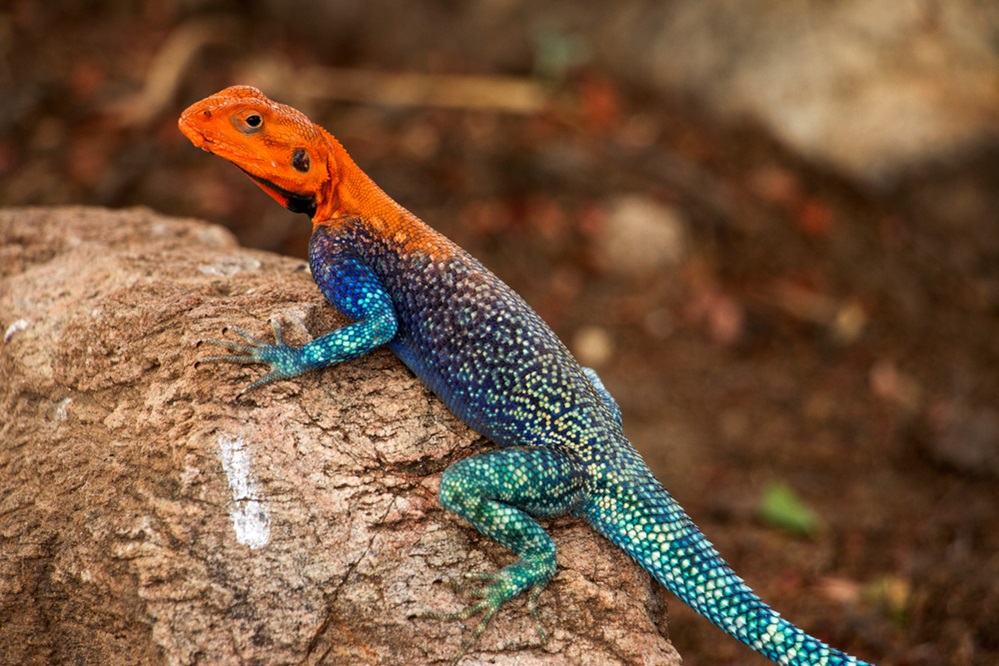
The agama lizard isn’t just one species, but a vibrant family of over 400 reptiles thriving across sub-Saharan Africa and parts of Asia. These resourceful lizards come in a dazzling array of shapes, sizes, and colors, each perfectly adapted to their specific environment.
Some agamas are masters of camouflage, blending in with browns, greens, and grays, while others like the paradise agama sport a flashy display of blues, oranges, and yellows for communication and attracting mates.
From the tiny dwarf agama just a few inches long to the impressive giant agama reaching three feet, all agama lizards share some common features. Their flattened bodies allow them to squeeze into hiding spots, strong limbs with sharp claws help them navigate their surroundings, and their most distinctive feature – long, sticky tongues – are perfectly designed for catching insects, their primary food source.
Aardwolf
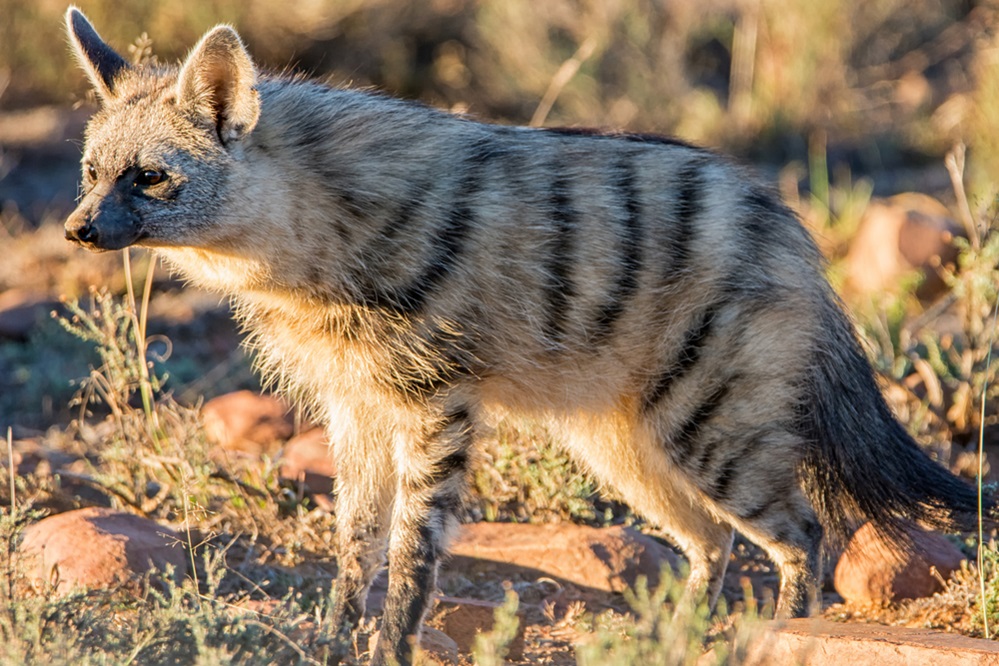
The aardwolf, despite its hyena-like appearance with a striped coat and powerful legs, belongs to a family all its own. Found in the grasslands and savannas of sub-Saharan Africa, this solitary scavenger is an expert termite hunter.
Aardwolves have a surprising weapon for their diet: a long, sticky tongue that stretches up to half their body length! This remarkable adaptation allows them to efficiently slurp up termites from unearthed mounds, while powerful claws aid in digging.
Unlike hyenas, aardwolves are specialized insectivores, playing a vital role in controlling termite populations within the African ecosystem.
Baboon

The baboon, a member of the genus Papio, is a quintessential African primate readily recognized for its intelligence and social behavior. These boisterous monkeys hold a firm position within the savanna ecosystem, inhabiting various habitats across sub-Saharan Africa and even parts of Arabia.
Baboons come in six distinct species, with the olive baboon being the most widespread. Physically, they are stocky primates with powerful jaws and sharp canine teeth. Males are distinguished by their prominent manes, while all baboons possess long snouts and expressive faces.
Baboons are often kept as exotic pets, although this practice is controversial and often discouraged due to the challenges of caring for such intelligent and potentially dangerous animals in a domestic setting.
Bale Monkey

Nestled high in the Bale Mountains of Ethiopia, the Bale monkey (Chlorocebus baleensis) thrives in a unique habitat unlike any other close relative. These endangered primates, with their distinctive white spot on their forehead and dark brown fur, are perfectly adapted to their cool, Afroalpine environment.
Unlike their forest-dwelling cousins, Bale monkeys have developed thick fur and a special tolerance for cold temperatures, allowing them to survive at high altitudes. Social creatures, they live in troops of up to 70 individuals, spending their days foraging for a varied diet of leaves, fruits, flowers, and even insects.
Their playful nature and acrobatic skills are a joy to observe as they navigate the challenging mountain slopes.
Black Rhinoceros

The Black Rhinoceros, once a thundering presence across sub-Saharan Africa, now stands as a symbol of endangerment. These powerful herbivores, with their distinctive hooked upper lip used for grasping thorny vegetation, are the smaller of the two African rhino species.
Despite their imposing size, reaching up to six feet tall at the shoulder, Black rhinos are surprisingly agile browsers. Tragically, their most prominent feature, the two horns composed of compacted keratin, has also been their downfall. Fueled by a demand for these horns in traditional medicine, poaching has driven Black rhinos to the brink of extinction.
Conservation efforts focus on anti-poaching patrols, habitat protection, and even de-horning rhinos as a deterrent. The future of this magnificent creature hinges on the success of these efforts, ensuring they once again roam free across the African savannas.
Black Mamba

Striking fear into the hearts of many, the Black Mamba lives up to its name with its potent venom and sleek, jet-black body (despite its name, some Black Mambas can be brownish-gray).
This highly venomous snake, native to sub-Saharan Africa, is one of the fastest snakes on land, slithering at speeds of up to 12 miles per hour. While Black Mambas are shy and prefer to avoid confrontation, their powerful neurotoxic venom can be fatal to humans if left untreated.
They are primarily ambush predators, relying on their speed and agility to overpower small mammals and birds. Black Mambas are a vital part of the African ecosystem, helping to control rodent populations.
Blue Duiker

The blue duiker, the smallest antelope species in Africa, stands out for its size and cryptic coloration. Found in central, southern, and eastern Africa, these miniature marvels typically reach only 40 cm (16 inches) at the shoulder.
Despite their diminutive stature, blue duikers are agile creatures, navigating dense brush and forests with ease. Their name comes from their blue-grey coat, which provides excellent camouflage in their woodland habitat.
Unlike many antelope associated with open savannas, blue duikers are primarily browsers, feeding on leaves, fruits, and flowers. They are territorial and solitary creatures, except during breeding season.
Blue Wildebeest

The blue wildebeest, also known as the common wildebeest or brindled gnu, is a large antelope gracing the savannas and grasslands of southern and eastern Africa. These social creatures, easily recognized by their broad shoulders and muscular build, are surprisingly agile despite their stocky appearance.
Standing roughly 1.5 meters (5 feet) tall, blue wildebeest exhibit a fascinating coat coloration. While adult males are generally darker, both sexes sport a unique pattern of vertical stripes on their shoulders and backs, earning them the nickname “brindled gnu.” These stripes might serve as a form of camouflage, but their true purpose remains a subject of debate among scientists.
Blue wildebeest are famous for their large-scale migrations, following the rains in search of fresh grazing pastures. These impressive treks, sometimes involving thousands of animals, are a remarkable display of nature’s synchronized movement.
Bonobo

The bonobo, also called the pygmy chimpanzee, is a highly intelligent and social ape native to the Democratic Republic of the Congo in Central Africa. They are believed to be the most closely related ape species to humans, sharing over 90% of our DNA.
Bonobos are known for their peaceful and tolerant nature, often resolving conflicts through non-aggressive means like affection and appeasement behaviors.
Bongo

The bongo, a forest antelope native to the dense rainforests of Central Africa, is a captivating sight with its beautiful markings and elusive nature. Standing around 1 meter (3.3 ft) tall at the shoulder, bongos are the largest forest antelope species.
Their most striking feature is their unique coat pattern, consisting of a rich chestnut body contrasted with bold, vertical white stripes. This striking coloration provides excellent camouflage amidst the dappled sunlight filtering through the rainforest canopy.
Bushbaby

The bushbaby, a captivating resident of sub-Saharan Africa’s woodlands and forests, is a master of the night. These adorable primates, with their enormous eyes and large, round ears, are perfectly adapted for navigating the darkness. Their huge eyes, some of the largest relative to their body size among all mammals, allow them to see exceptionally well in low-light conditions.
Bushbabies also possess incredible agility, leaping and climbing through the trees with remarkable grace thanks to their long tails and powerful hind legs.
Bushbuck
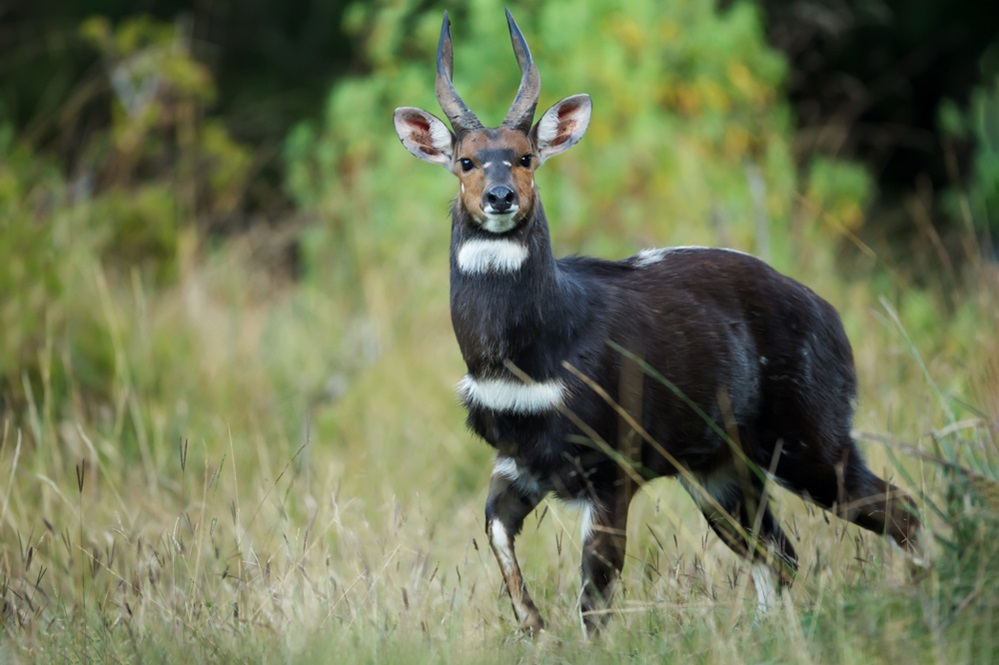
Thriving in the dense bush and forests of sub-Saharan Africa, the bushbuck is a shy and solitary antelope known for its reddish-brown to almost black coat. These agile creatures stand roughly 1 meter (3.3 ft) tall at the shoulder and are surprisingly adept at navigating thick vegetation.
Bushbuck possess a unique body shape with a high shoulder line that slopes dramatically down to the rump. Despite this seemingly awkward build, it allows them to move with surprising stealth and maneuver through dense undergrowth with ease.
Both males and females sport horns, with the males’ horns being noticeably larger and spiraling upwards. These horns are used for defense against predators and during dominance displays among males.
Bushbucks are primarily browsers, feeding on leaves, fruits, and flowers throughout the day. While relatively widespread, their elusive nature and preference for dense cover make them a challenging sight for most.
Cape Hare
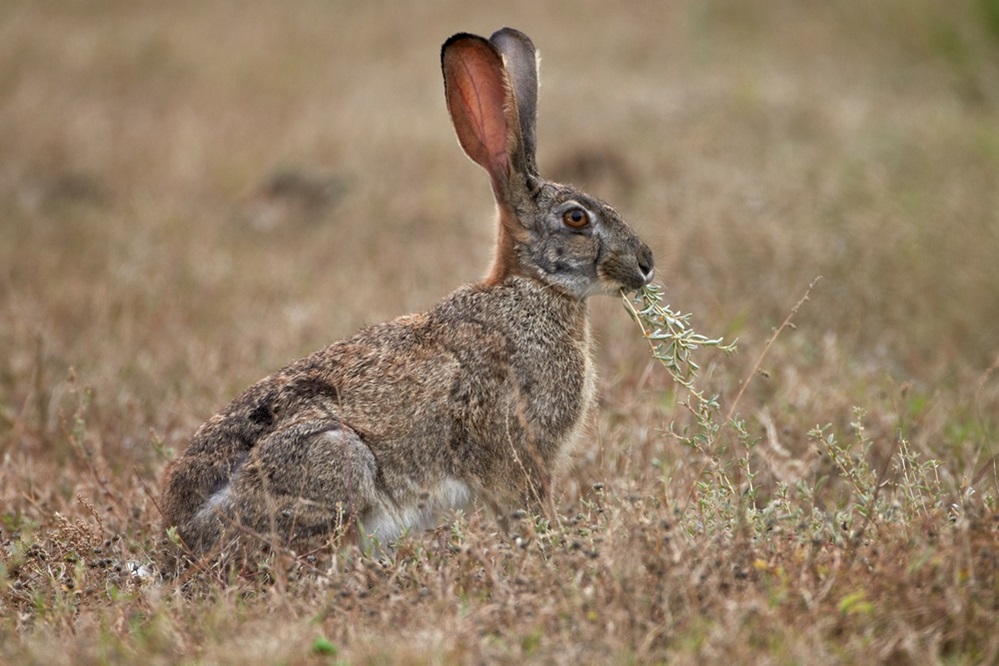
Dwelling within the grasslands and shrublands of southern Africa, the Cape hare isn’t your typical bunny. Unlike its cuddly domestic cousins, this hare is a champion sprinter, boasting well-developed legs for powerful leaps and bursts of speed. Essential for escaping predators on the open plains, these bursts can reach up to 45 kilometers per hour (28 mph).
Cape hares come in a range of earthy tones, from light brown to reddish-gray, with a white ring typically surrounding their large, watchful eyes. Interestingly, unlike most mammals, female Cape hares are larger than the males.
These solitary creatures spend their nights grazing on grasses and various shrubs, and a unique behavior amongst hares is their coprophagy – consuming their own fecal pellets to extract maximum nutrients from their diet.
Caracal

Prowling the arid savannas and deserts of Africa and parts of Asia, the caracal is a slender wild cat with a surprising hunting prowess. Despite its resemblance to a lynx, the caracal belongs to a separate lineage.
Standing tall on long legs and sporting a short, sandy coat, its most striking feature is the prominent black tufts adorning the tips of its pointed ears. These tufts might play a role in communication or prey location.
Unlike its larger lion and leopard relatives, the caracal is a solitary hunter, relying on its exceptional agility and stealth during the night. Its secret weapon.
A remarkably long, sticky tongue that can stretch up to half its body length! This impressive adaptation allows the caracal to efficiently extract termites, its primary prey, from unearthed mounds.
Chameleon

Masters of disguise, chameleons are a captivating group of Old World lizards renowned for their ability to change color. These arboreal reptiles, primarily found in Madagascar and Africa, come in a dazzling array of shapes and sizes, each perfectly adapted to their specific environment.
While some chameleons blend seamlessly with their surroundings, sporting earthy browns, greens, and grays, others like the veiled chameleon boast vibrant blues, yellows, and oranges.
This color-changing ability isn’t just about camouflage; it’s also used for communication, regulating body temperature, and even expressing dominance. Beyond their impressive color palette, chameleons possess other unique features.
Chameleons, renowned for their color-changing prowess, are often kept as exotic pets, captivating enthusiasts with their unique behaviors and mesmerizing appearances.
Their eyes can move independently, granting them a near 360-degree view of their surroundings. Their long, sticky tongues act like lightning-fast projectiles, perfectly designed for snatching unsuspecting insects, their primary food source.

The cheetah, a sleek and elegant big cat, reigns supreme as the fastest land animal on Earth. Built for unrivaled speed, its slender body with long, powerful legs allows for explosive acceleration and incredible agility.
Unlike other large cats with retractable claws, the cheetah’s semi-retractable claws provide superior traction during high-speed chases. Their distinctive spotted coat, a golden tan with solid black spots, offers some camouflage in tall grasses as they stalk prey.
Cheetahs are primarily diurnal hunters, relying on their keen eyesight to spot gazelles, wildebeest calves, and other antelopes during the day. The hunt itself is a breathtaking display of speed and precision, with the cheetah reaching bursts of up to 70 miles per hour (112 kilometers per hour) in short sprints.
Despite their impressive hunting capabilities, cheetahs are not the strongest predators and rely on their speed to outrun prey rather than overpower them.
Chimpanzee

Chimpanzees, our closest living relatives, are highly intelligent apes that inhabit the tropical forests and savannas of Central and West Africa. These social creatures, known for their expressive faces and complex social behaviors, live in groups of up to 80 individuals led by dominant males.
Chimpanzees are remarkably intelligent, using tools, solving puzzles, and even exhibiting a form of culture by sharing learned behaviors across generations. Their diet is primarily omnivorous, consisting of fruits, leaves, insects, and occasionally small mammals.
Communication plays a vital role in chimpanzee society, with a rich repertoire of vocalizations, gestures, and facial expressions used to convey emotions, maintain social order, and coordinate group activities.
Crested Guineafowl

Adorned with a unique elegance, the crested guineafowl is a common sight in the grasslands and woodlands of sub-Saharan Africa. These ground birds, belonging to the Numididae family, are known for their distinctive appearance.
Standing around 50 cm (20 inches) tall, they have a blackish plumage densely spotted with white, offering some camouflage in tall grasses. However, their most striking feature is the crest on their head. This varies depending on the subspecies, ranging from small curly feathers to a downy puff, and instantly sets them apart from most other guineafowl species.
Crested guineafowls are social birds, living in flocks with a dominant pair leading the group. Primarily terrestrial feeders, they spend their days scratching at the ground with their powerful claws in search of seeds, insects, and small invertebrates.
Despite their lack of a strong voice box, they are surprisingly vocal, communicating with a variety of clicks, whistles, and harsh calls.
Crowned Crane
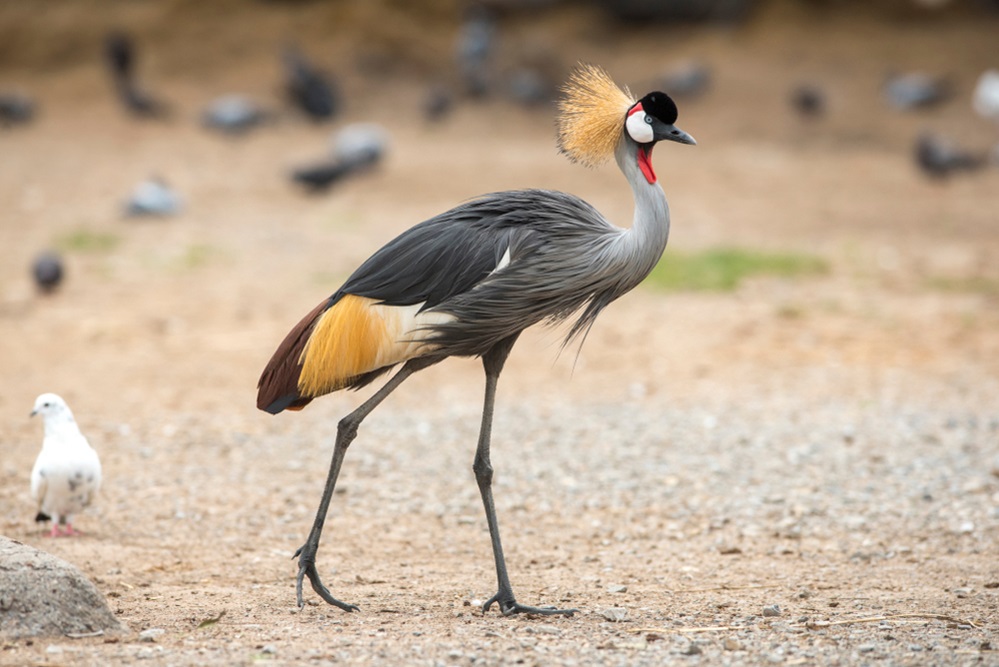
The crowned crane, a majestic resident of the wetlands and grasslands of sub-Saharan Africa, embodies elegance and grace. Standing tall with a regal posture, these birds are instantly recognizable by their golden crown of feathers, tipped with black.
Beyond their striking headwear, crowned cranes boast a beautiful plumage of grey feathers and contrasting white wing patches. These aren’t just beautiful birds; they’re also skilled dancers.
Crowned cranes are known for their elaborate courtship displays, involving head-bobbing, wing-flapping, leaps, and bows – a truly mesmerizing performance. Unlike most crane species, crowned cranes can even perch in trees, adding another layer of uniqueness to their repertoire.
While primarily omnivorous, feeding on grasses, seeds, insects, and small animals, crowned cranes are considered beneficial to their ecosystem as they help control insect populations.
Desert Warthog
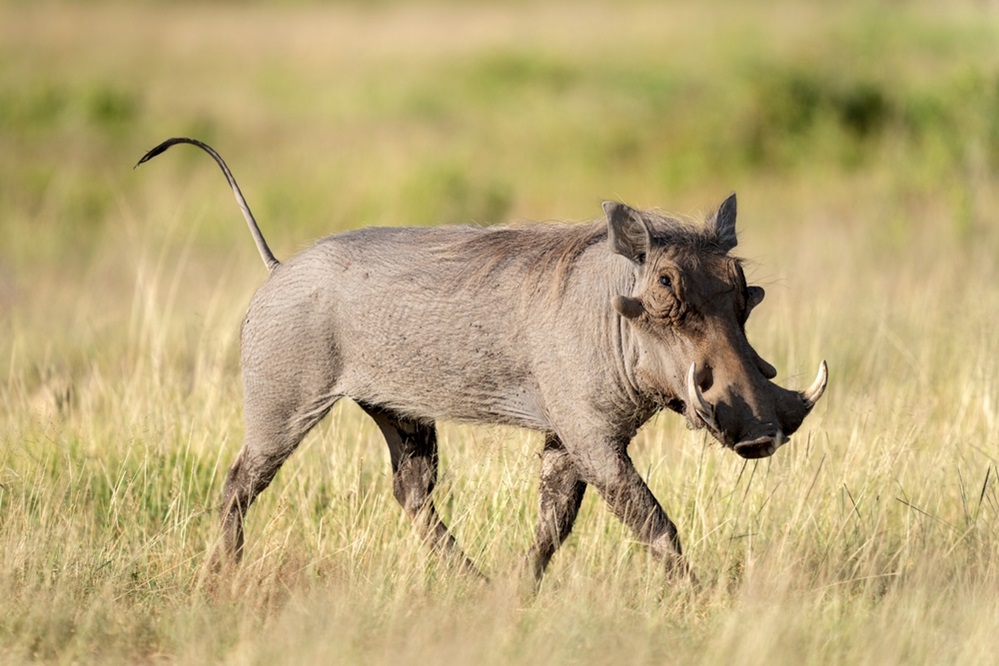
Thriving in the harsh environment of the Horn of Africa, the desert warthog is a lesser-known but fascinating relative of the common warthog. These stocky mammals, around the size of a medium dog, are built for life in the arid landscape.
Unlike their forest-dwelling cousins, desert warthogs have a lighter colored coat, ranging from sandy beige to reddish-brown, providing better camouflage in the open desert. Their most distinctive feature, the warthog namesake – the tusks – are prominent in both males and females. These sharp tusks are used for digging, fighting, and foraging for their primary food source: termites.
Desert warthogs possess a remarkable adaptation for their termite diet – a long, sticky tongue that can extend up to half their body length! This specialized tool allows them to efficiently slurp up termites from unearthed mounds, a crucial skill for survival in the food-scarce desert environment.
Dik-Dik

The dik-dik, a diminutive antelope native to the East African savanna, is a master of survival in a harsh environment. These tiny creatures, standing just 12-16 inches tall at the shoulder, rely on a combination of camouflage and keen senses to avoid predators.
Their coats, typically a greyish-brown or yellowish-gray, blend seamlessly with the dry brush and acacia trees they inhabit. Large, dark eyes and mobile ears provide exceptional night vision and hearing, allowing them to detect threats from afar.
Unlike most antelope, dik-diks lack horns, but males possess a small, pointed horn on their forehead. These solitary creatures are primarily browsers, feeding on leaves, shoots, and fruits throughout the day.
When danger approaches, dik-diks don’t flee; instead, they let out a series of sharp barks, earning them the nickname “the smallest antelope with the loudest bark.” This alarm call helps warn others and often allows them to dart into the undergrowth for cover.
Donkey
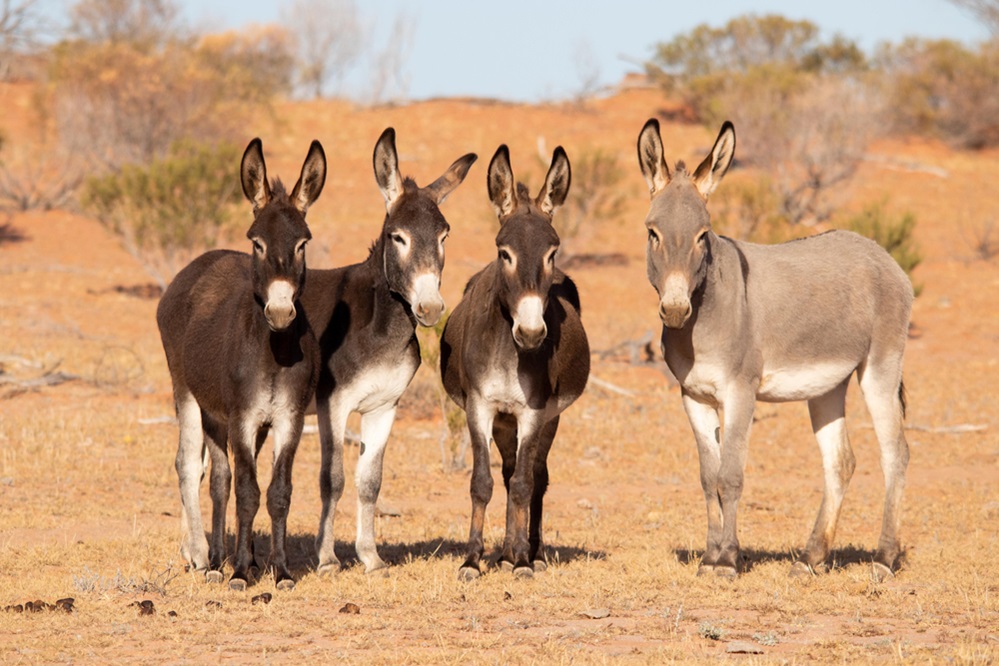
Donkeys, often mistaken for stubborn beasts, are actually intelligent and social animals with a rich history alongside humans. Originally hailing from Africa, these sturdy creatures have been domesticated for over 5,000 years, serving as working animals prized for their surefootedness and ability to carry heavy loads over rough terrain.
Donkeys come in a variety of sizes and colors, with some breeds standing as tall as horses. Their distinctive features include a long, expressive face, large, mobile ears, and a short, bristly mane.
Despite their reputation, donkeys are known for their loyalty and gentle nature, forming strong bonds with their human companions. They are also surprisingly vocal, communicating through a range of brays and whinnies.
Drill

The drill, a powerful primate inhabiting the rainforests of West Africa, is a social powerhouse with a complex hierarchy. These robust monkeys, second only to gorillas in size, are instantly recognizable by their prominent brow ridges and ridged snouts.
Living in troops of up to 30 individuals, drills have a fascinating social structure led by dominant females. Communication plays a crucial role in drill society, with a rich repertoire of vocalizations including loud barks, hoots, and choruses used to maintain social order, communicate threats, and coordinate group movements.
Despite their impressive size, drills are primarily herbivores, feeding on a variety of fruits, leaves, seeds, and flowers. However, they are also known to occasionally consume insects and small mammals, showcasing their dietary flexibility.
Sadly, drills are classified as endangered due to habitat loss from deforestation and hunting for bushmeat. Conservation efforts focused on protecting rainforests and promoting sustainable practices are vital for ensuring the survival of these intelligent and social primates.
Drongo

The drongo, a sleek black or dark gray bird found in sub-Saharan Africa and parts of Asia, is a master of mimicry and a cunning opportunist. These intelligent birds are skilled at imitating the calls of other species, including birds of prey and even mammals.
Drongos use this remarkable ability to their advantage, sometimes mimicking alarm calls to scare away other birds from food sources, which the drongo then claims for itself. While they are primarily insectivores, feeding on a variety of insects they catch in flight or on the ground, drongos are resourceful and will readily exploit these mimicked calls for easier access to food.
This impressive mimicry, coupled with their acrobatic flying skills and bold personalities, makes the drongo a fascinating and entertaining resident of the African savannas and woodlands.
Egret

Graceful sentinels of wetlands and waterways, egrets are wading birds that capture the essence of elegance. These medium-sized herons, found on most continents, possess a slender build with long legs and necks that allow them to stalk prey in shallow waters.
Their plumage is typically white as snow, offering a stark contrast against the water and reeds. Some species, however, boast beautiful adornments like plumes or colorful bills.
Egrets are skilled hunters, using their sharp eyesight and lightning-fast reflexes to spear fish, frogs, and insects with their pointed beaks. While solitary hunters, they often congregate in large numbers at feeding grounds, creating a breathtaking spectacle.
Eland

Towering over the African savannas and grasslands, the eland reigns supreme as the largest antelope species. These gentle giants, reaching heights of up to six feet at the shoulder and weighing nearly a ton, are a force to be reckoned with.
Their shaggy coats, typically a tawny brown with vertical white stripes on the body and legs, offer some camouflage amidst tall grasses. Despite their immense size, elands are surprisingly agile grazers, adept at navigating the open plains.
Both sexes sport impressive horns, with the males’ horns being noticeably thicker and spiraling in a corkscrew pattern. These horns are used for defense against predators like lions and hyenas, as well as during dominance displays among males.
Elands are social creatures, living in herds of up to several hundred individuals. Their primary diet consists of grasses, leaves, and fruits, which they spend a significant portion of their day grazing on.
Electric Eel

Unlike its namesake from South America, the African electric eel isn’t actually an eel, but a type of weakly electric catfish! Found in the murky freshwater rivers and lakes of tropical Africa, these fish are fascinating for their ability to generate electric shocks.
While nowhere near as powerful as the electric eel of the Amazon, the African electric eel can still deliver a surprising jolt. This electrical output serves a defensive purpose, deterring predators and helping them navigate the murky waters by electrolocation, a sense that allows them to perceive their surroundings using electric fields.
African electric catfish are primarily nocturnal scavengers, using their electric sense to locate small invertebrates and fish on the riverbed.
Elephant Shrew

The elephant shrew, a captivating little mammal native to Africa, is a paradox of sorts. Despite its name, it’s not actually a shrew and has no close relation to elephants. Elephant shrews are insectivores with a long, pointed snout that vaguely resembles an elephant’s trunk, hence the name.
These quick and agile creatures come in various species, ranging from the tiny Sengi of Namibia, the size of a house mouse, to the larger Golden-rumped elephant shrew, reaching lengths of up to 20 centimeters. Despite their small stature, elephant shrews are formidable hunters with a keen sense of smell and exceptional hearing.
Their sharp claws and powerful hind legs enable them to dig efficiently for insects and invertebrates in the soil, their primary prey. Elephant shrews are solitary creatures except during breeding season, and communication often involves high-pitched squeaks and whistles.
Fennec Fox

The fennec fox, a tiny desert dweller of North Africa, defies expectations with its oversized features. This pint-sized canine, the smallest fox species in the world, stands just up to 16 inches tall at the shoulder.
However, its most striking characteristic is undeniably its ears – the largest relative to body size of any canid. These enormous ears, reaching up to 5 inches in length, serve a dual purpose. They act as radiators, dissipating heat in the scorching desert sun, and as sensitive tools for locating prey burrowing beneath the sand.
Despite their diminutive stature, fennec foxes are feisty and adaptable hunters, thriving in the harsh desert environment. Their thick fur provides insulation at night, while their long claws allow them to dig efficiently for insects, lizards, and small mammals.
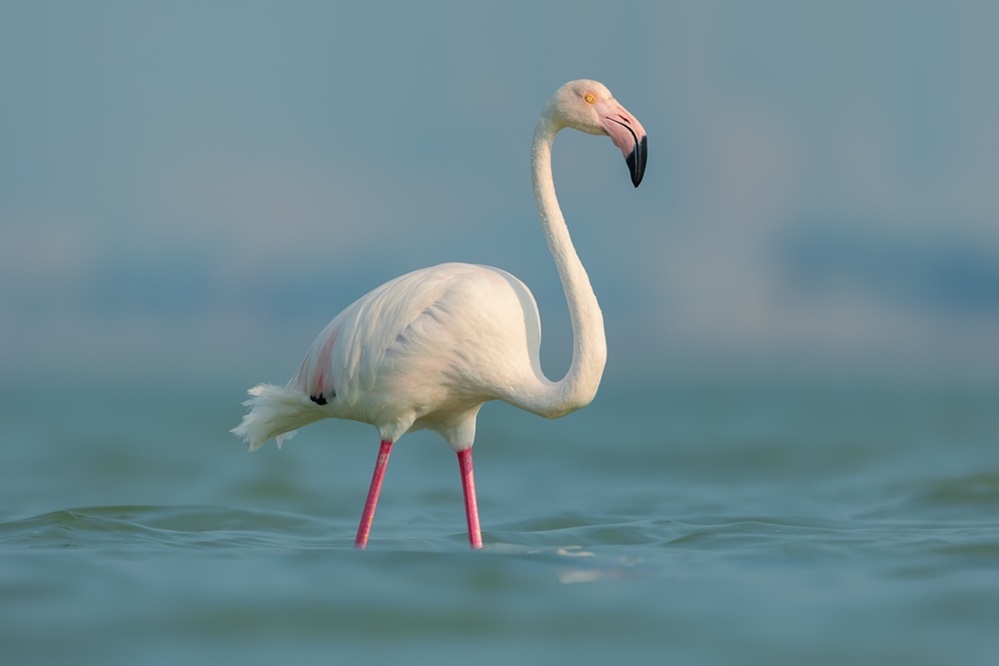
A vision of elegance wading through shallow waters, the flamingo is a captivating bird known for its vibrant pink feathers and graceful movements. These tall wading birds, found in Africa, southern Europe, and parts of Asia and the Americas, stand out with their long, slender legs and necks.
Their most striking feature is their plumage, which ranges from a pale pink to a deep crimson. This coloration comes from pigments in their diet, primarily small crustaceans and algae.
Flamingos are highly social creatures, often congregating in large flocks numbering in the hundreds or even thousands. They feed by wading in shallow water, filtering food through specialized bills that separate water from their prey.
Flying Fox

Soaring through the twilight skies of Africa and beyond, flying foxes are not actually foxes, but rather the largest fruit bats in the world. Despite their imposing wingspans, reaching up to 1.5 meters (5 feet), these gentle giants are frugivores, playing a vital role in seed dispersal and ecosystem health.
With their fox-like faces and excellent eyesight, flying foxes navigate the night by sight rather than echolocation, unlike most bat species. Highly social creatures, they roost in massive colonies that can number in the thousands, creating a cacophony of sounds at dusk as they take flight in search of ripe fruits.
While some species are considered agricultural pests due to their fondness for cultivated fruits, flying foxes are ecologically important, and populations are threatened by habitat loss and hunting for meat or bushmeat.
Forest Elephant

The elusive forest elephant, shrouded in the dense rainforests of Central and West Africa, stands as a gentle giant distinct from its savanna cousin. Smaller and stockier than its counterpart, the forest elephant is perfectly adapted to navigate the thick undergrowth.
Their most distinguishing features are their rounder foreheads, straighter tusks, and oval-shaped ears compared to the savanna elephant. Despite their impressive size, forest elephants are primarily browsers, feeding on leaves, fruits, and bark found high up in the rainforest canopy.
Aiding them in this quest are their strong trunks and prehensile lips, allowing them to expertly reach and grasp food sources. Living in smaller family groups compared to savanna elephants, forest elephants play a vital role in the rainforest ecosystem by dispersing seeds through their vast range, promoting plant diversity.
Gabon Viper
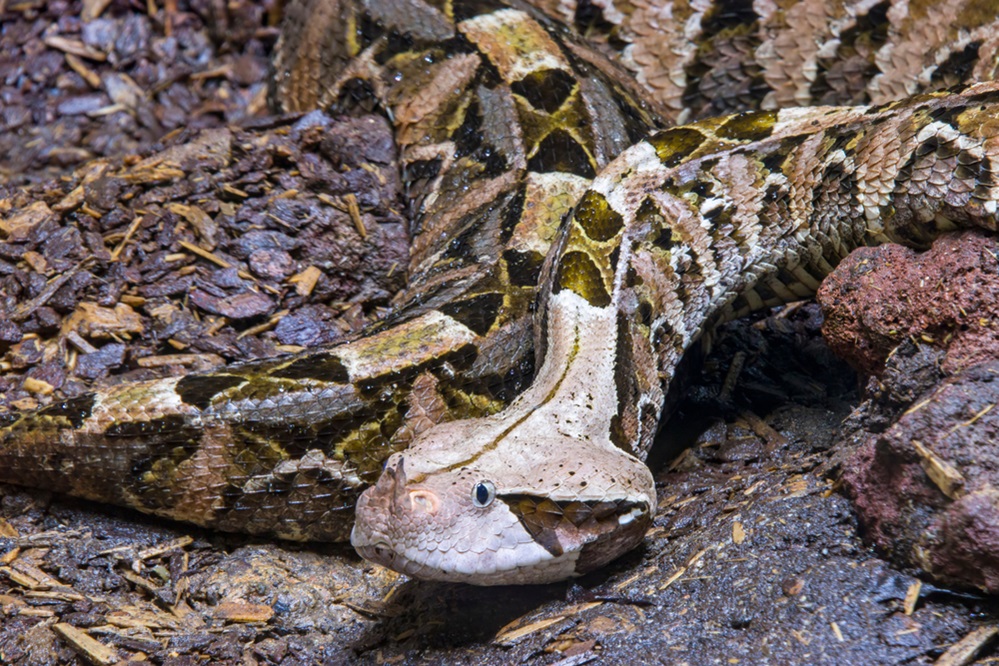
Striking fear into the hearts of many with its plump body and aggressive reputation, the Gabon viper reigns supreme as the heaviest venomous snake in Africa.
Found in the rainforests and savannas of Central and West Africa, this viper is a master of disguise. Its body is adorned with a beautiful yet deceptive patchwork of browns, yellows, blacks, and purples, allowing it to blend seamlessly with the fallen leaves and forest floor.
Despite its camouflage, the Gabon viper possesses the longest fangs of any venomous snake, reaching up to 2 inches (5 centimeters) in length. A single bite can deliver a massive dose of venom, making this viper a formidable predator.
However, unlike some aggressive vipers, the Gabon viper is surprisingly lethargic and prefers to ambush unsuspecting prey, primarily small mammals and birds, rather than actively hunt them.
Giraffe

The giraffe, a truly iconic inhabitant of the African savanna, stands out as the tallest land animal on Earth. Towering over the grasslands at heights exceeding 18 feet (5.5 meters), their long necks and legs are adaptations for a unique browsing lifestyle.
Giraffes lack upper front teeth, but their strong, prehensile tongue, extending up to 20 inches, allows them to reach leaves on high branches that are inaccessible to most other herbivores.
Their patterned coat, a beautiful mosaic of brown patches on a light background, provides some camouflage amongst the dappled sunlight filtering through the acacia trees, their primary food source.
Despite their size, giraffes are surprisingly social creatures, living in loose herds of females and their young. Males, easily identified by their knob-like ossicones on their heads, engage in “necking” contests to establish dominance, a display of strength more than aggression.
Gorilla

The gorilla, a gentle giant of the African rainforest, is the largest primate on Earth. These impressive creatures with broad chests and powerful arms live in family groups led by a dominant silverback male. Silverbacks are easily identified by the distinctive silver saddle of fur on their backs.
Despite their immense size and strength, gorillas are primarily herbivores, spending most of their day foraging for leaves, fruits, and shoots. They are remarkably intelligent creatures, exhibiting complex social behaviors and displaying a wide range of emotions.
Communication plays a vital role in gorilla society, with vocalizations like grunts, barks, and roars used to maintain social order and express emotions.
Greater Kudu

Towering over the African savanna, the greater kudu is a majestic antelope instantly recognizable by its impressive spiraled horns. These horns, found only on males, can reach an impressive length of up to two meters (6.5 feet) and twist gracefully in a series of two and a half corkscrews.
Despite their imposing size, greater kudus are surprisingly agile browsers, adept at navigating dense thickets and leaping over obstacles with powerful legs. Their reddish-brown coat, marked with vertical white stripes, provides some camouflage in their woodland habitat.
Greater kudus are primarily solitary creatures, except during breeding season, and are most active during the cooler mornings and evenings.
Guereza
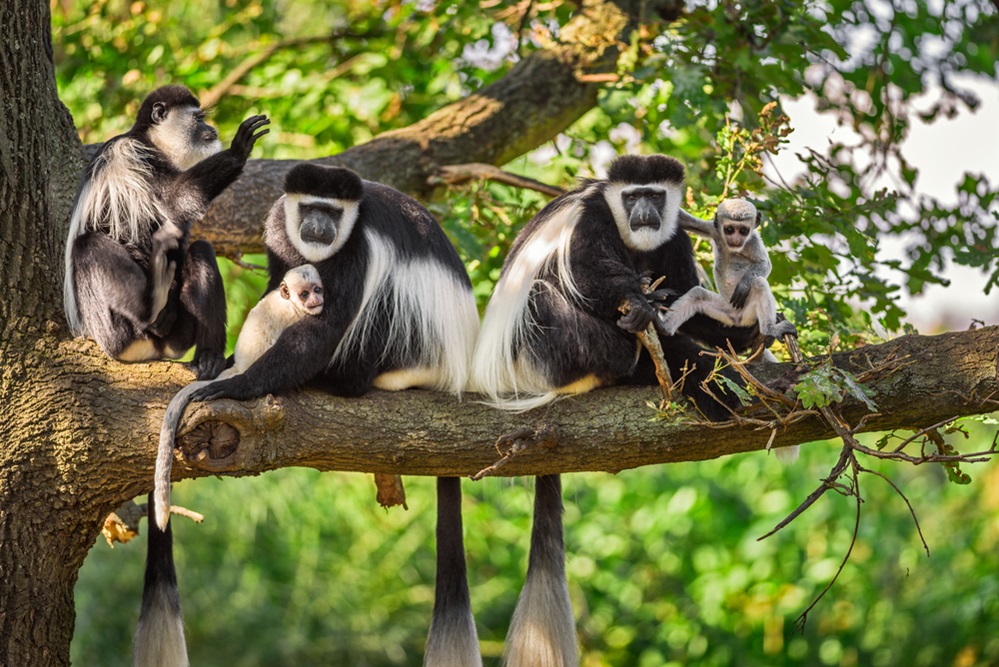
Highlighting the African rainforest canopy, the guereza, also known as the colobus monkey, is a captivating sight with its flowing black and white coat. These arboreal primates, the largest monkeys found in Africa, are perfectly adapted for life among the leaves.
Their long limbs and powerful tails allow them for impressive leaps and bounds through the dense foliage. But their most striking feature is their contrasting black and white coloration. The white fur on their shoulders and mane stands out against their black bodies, possibly serving as a form of communication during social interactions.
Guerezas are social creatures, living in family groups led by a dominant male. They are primarily folivores, spending most of their day feeding on leaves, flowers, and fruits. However, their impressive digestive system allows them to efficiently extract nutrients from these tough leaves, a crucial adaptation for their rainforest diet.
Guinea Baboon
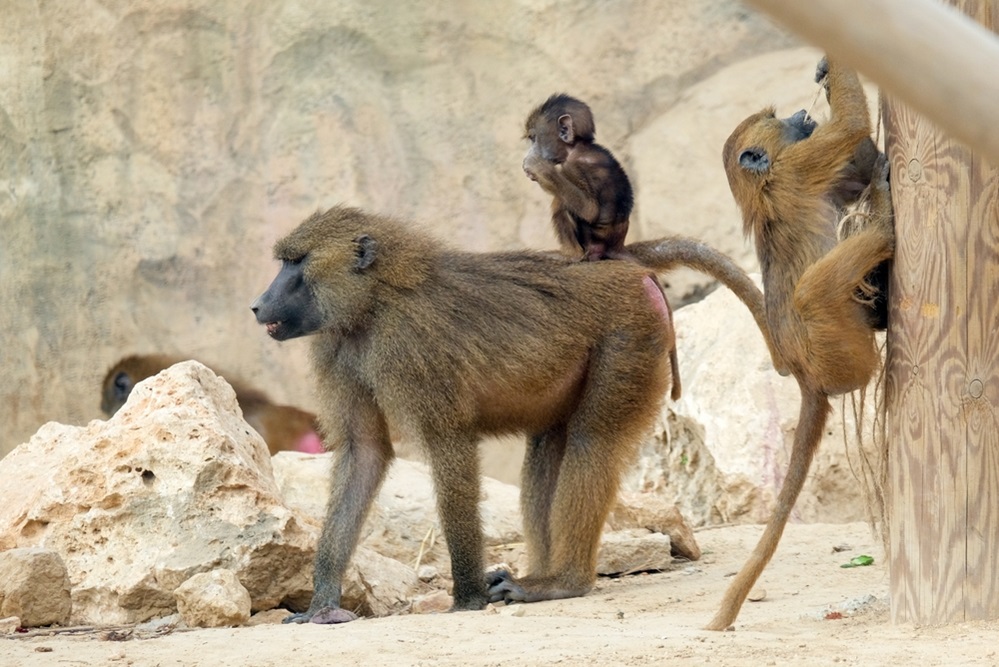
The Guinea baboon, a boisterous member of the baboon family, inhabits the grassy, rocky, and steppe regions of western Africa. These social primates, with their reddish-brown fur and long canine teeth, are known for their complex social lives.
Living in troops of up to 200 individuals, Guinea baboons exhibit a strict hierarchy with dominant males at the top. Communication is key within these troops, with a rich repertoire of barks, growls, screams, and even lip smacks used to maintain order, express emotions, and sound alarms.
Guinea baboons are opportunistic omnivores, relying on their intelligence and adaptability to find food. They spend a significant portion of their day foraging for fruits, grasses, insects, and small animals, sometimes even raiding crops.
Despite their scavenging tendencies, Guinea baboons play a vital role in their ecosystem by dispersing seeds through their waste and helping to control insect populations.
Guineafowl
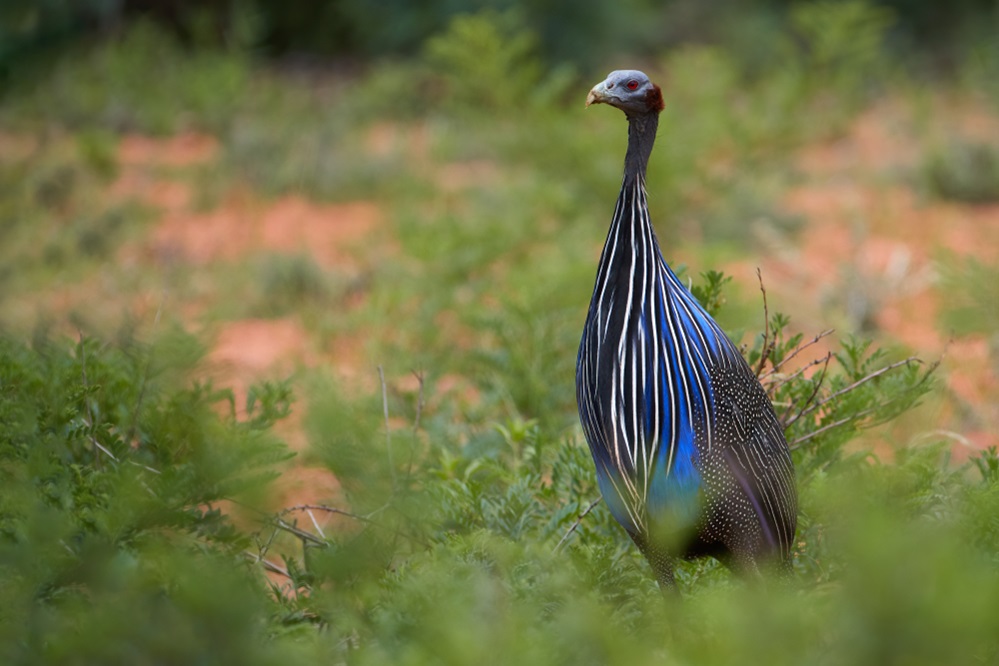
The guineafowl, a common sight in sub-Saharan Africa’s grasslands and savannas, is a ground bird with a unique appearance and interesting social behavior. These members of the Numididae family come in several species, all sporting a mostly black plumage dotted with white spots that provide camouflage in tall grasses.
Their most distinctive feature is their helmet-like head structure, a bony protuberance that varies in size and color depending on the species. Guineafowl are social birds, living in flocks of up to several dozen individuals with a strict pecking order.
They spend their days scratching at the ground with their powerful claws in search of a varied diet that includes seeds, insects, and small invertebrates. Guineafowl are surprisingly vocal, communicating with a variety of loud calls and harsh clacks, especially when threatened or on the lookout for predators.
While not facing immediate endangerment, habitat loss due to agriculture and competition with other ground birds can put pressure on some guineafowl populations.
Hippopotamus

The hippopotamus, a behemoth of the African savannas and wetlands, is often mistaken for a land-dwelling creature, but it’s actually a semi-aquatic mammal. Despite its bulky frame, reaching up to 1.5 meters (5 feet) tall and 5 tons in weight, the hippopotamus is surprisingly agile in the water.
These giants spend most of their days submerged, staying cool and escaping the harsh sun. Their large nostrils and eyes sit high on their heads, allowing them to breathe and see while most of their body remains underwater.
Hippopotamuses are grazers, emerging at night to feed on grasses along the riverbanks. However, their seemingly docile nature belies a fierce temper. Highly territorial and aggressive, especially towards other hippos, their powerful jaws and sharp tusks make them a formidable opponent.
Honey Badger

The honey badger, a fearless inhabitant of African and Asian savannas and woodlands, is a walking paradox. Despite its stocky build and badger-like appearance, it’s not actually a badger but belongs to its own unique family, the Mustelidae. Standing around 30 inches tall, honey badgers are renowned for their tenacity and fearlessness.
Their loose skin and thick hide offer protection during brawls, and their powerful claws are perfect for digging and tearing into termite mounds, their primary food source. Earning the nickname “honey badger” for their love of honey, they possess a remarkable tolerance for bee stings, allowing them to raid beehives with impunity.
Honey badgers are famously aggressive and will fight off animals much larger than themselves, including lions and leopards.
Honeyguide

The honeyguide, a small bird found in sub-Saharan Africa, is an expert at forging an unlikely partnership with humans and other mammals. Unlike most birds, the honeyguide doesn’t directly collect honey itself. Instead, it relies on a remarkable symbiotic relationship.
With a series of persistent calls and fluttering flights, the honeyguide leads a honey badger, human, or other animal to a beehive. These larger creatures then break open the hive to access the honey, while the honeyguide feasts on the leftover beeswax, a food source almost no other animal can digest. This mutually beneficial partnership highlights the complex ecological interactions within the African savanna.
Hornbill

The hornbill, a captivating resident of Africa and Asia’s tropical and subtropical forests, is easily identified by its outlandish and often brightly colored beak. This remarkable bill, sometimes featuring a bumpy casque on the upper mandible, varies greatly in size and shape depending on the species.
Despite its dramatic appearance, the casque is surprisingly lightweight and may even play a role in regulating body temperature. Hornbills are omnivorous, with a diet that includes fruits, insects, small mammals, and even reptiles.
Their powerful beaks are perfectly adapted for cracking nuts and seeds, playing a vital role in seed dispersal and forest regeneration. Hornbills are social birds, often nesting in cavities in trees and exhibiting cooperative breeding behaviors.
Hyena

Hyenas, often misunderstood as scavengers, are actually cunning hunters with a unique social structure. Despite their resemblance to dogs, hyenas belong to a separate family and possess incredible adaptations for a life on the African savanna.
Spotted hyenas, the largest and most common species, live in complex social groups called clans, which can number up to 80 individuals. These matriarchal societies are led by powerful females, and hyenas are known for their loud whoops and cackles used for communication and territorial defense.
While they do scavenge at times, spotted hyenas are formidable hunters, possessing powerful jaws and crushing teeth that allow them to take down prey as large as wildebeest. Their remarkable digestive system even allows them to break down bones, extracting every last bit of nourishment from their meals.
Impala

Graceful yet powerful, the impala is a quintessential antelope of the African savannas and grasslands. These medium-sized herbivores, reaching up to shoulder heights of 1.5 meters (5 feet), are renowned for their elegance and agility.
Their most striking feature is their impressive horns, which spiral upwards in a lyre-like shape. These horns are more prominent in males and are used for defense against predators and during dominance displays among males.
Impalas exhibit a remarkable adaptation for their grazing lifestyle – their high-waisted build. This seemingly awkward posture allows them to keep their heads held high for vigilance while still reaching low-growing grasses for sustenance.
Living in herds that can number in the hundreds, impalas are social creatures with complex social structures. Females and young form the core of the herd, while males establish territories and compete for breeding rights.
Despite their graceful demeanor, impalas are surprisingly fast runners, reaching bursts of up to 80 kilometers per hour (50 mph) – a crucial ability for outrunning predators like lions and cheetahs.
Jackal

Jackals, adaptable canids found across Africa, Asia, and even parts of Europe, are notorious opportunists with a distinctive howl. These medium-sized scavengers play a vital role in their ecosystems, acting as cleanup crew by consuming carrion left behind by larger predators.
Jackals aren’t just scavengers, though. They’re also skilled hunters, working together to take down prey like rodents, reptiles, and even small antelopes. Their keen senses of smell and hearing allow them to locate prey and carrion with remarkable accuracy.
Jackals are highly social creatures, living in family groups with complex social hierarchies. These vocal animals communicate through a variety of howls, yelps, and barks, used for everything from coordinating hunts to maintaining social order within the pack.
While not currently endangered, some jackal populations face threats like habitat loss due to agriculture and persecution by humans who view them as pests.
Kingfisher

The kingfisher, a vibrant jewel flitting across rivers and lakes worldwide, is a captivating avian predator. These compact birds, with oversized heads and dagger-like bills, come in a dazzling array of colors, from electric blues and fiery oranges to iridescent greens.
Kingfishers are renowned for their perch-diving hunting technique. They patiently observe the water from a branch, transforming into a blur of color as they plummet headfirst to snatch unsuspecting fish. Their short legs and stubby tails are perfectly adapted for streamlined underwater maneuvers.
While their diet primarily consists of fish, some kingfisher species may also target insects, lizards, and even small rodents. Kingfishers are solitary creatures except during breeding season, and their loud, rattling calls often serve as an indicator of their presence near freshwater habitats.
Sadly, some kingfisher populations face threats due to habitat loss from pollution and river degradation. Conservation efforts focused on protecting clean water sources are crucial for ensuring the continued success of these dazzling and skilled fishing birds.
Klipspringer
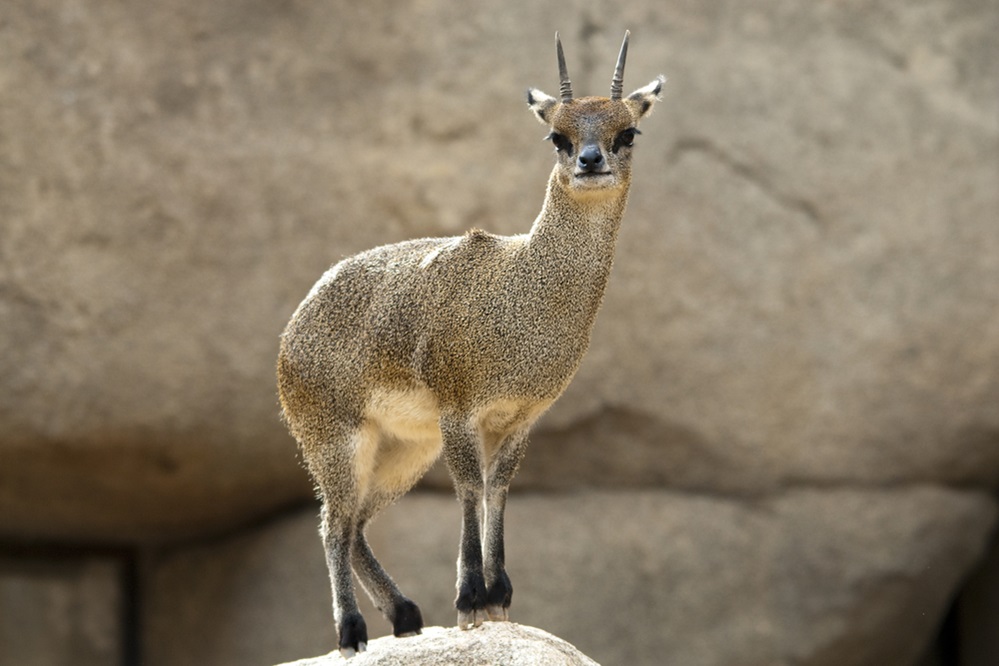
Defying gravity on rocky slopes, the klipspringer is a tiny antelope that thrives in the harsh mountain ranges of sub-Saharan Africa. Standing just around half a meter tall at the shoulder, these nimble creatures are perfectly adapted for their high-altitude lifestyle.
Their stocky build with powerful hind legs allows them to navigate steep inclines and rocky outcrops with impressive agility. Their hooves, equipped with rubbery pads, provide excellent traction on slippery surfaces.
Unlike most antelope associated with open plains, klipspringers are primarily browsers, reaching high with their long necks to nibble on leaves and shoots from shrubs and small trees. Their sandy brown or grayish coat provides excellent camouflage against the rocky terrain, making them a challenging sight for predators.
Klipspringers are solitary creatures, except during breeding season, and rely on their keen eyesight and hearing to stay alert to danger.
Korhaan

Across the grasslands and savannas of sub-Saharan Africa, the korhaan struts its stuff. This bustard-like bird, also known as a bustard quail, comes in two varieties: the red-crested korhaan and the southern black korhaan. While both korhaan species share a similar stocky build and long legs for navigating tall grasses, their plumage sets them apart.
The red-crested korhaan sports a vibrant display of red on its head and neck, while the southern black korhaan is aptly named for its predominantly black plumage with contrasting white patches. Despite their differences in appearance, both korhaans share a taste for a varied diet. They’ll munch on insects, seeds, and small reptiles, using their sharp beaks to probe the ground for hidden treats.
Mating season is a time for the males to show off. They’ll perform elaborate displays involving aerial acrobatics and loud calls to attract mates.
Kori Bustard
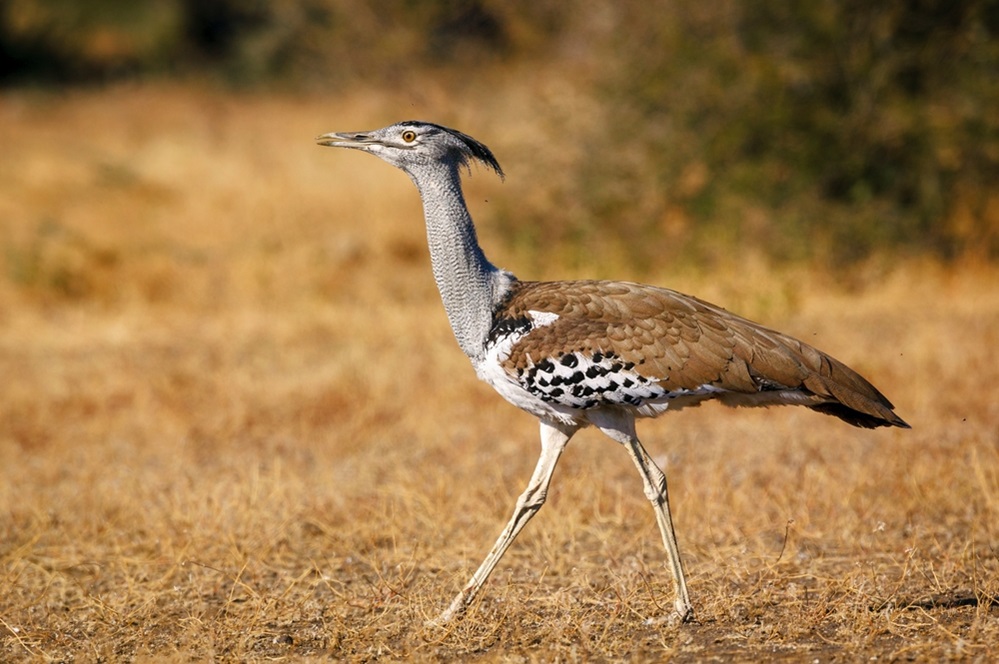
The Kori bustard, a majestic inhabitant of Africa’s grasslands and savannas, holds the title of the largest flying bird on the continent. These giants, with males reaching weights of up to 44 pounds (20 kilograms), are a breathtaking sight.
Their plumage is a cryptic blend of greys and browns, offering camouflage in their open habitat. Atop their heads sits a distinctive black crest, with the female’s being less prominent. Despite their impressive size, Kori bustards are surprisingly agile flyers, taking to the skies when threatened by predators.
However, they spend most of their time on the ground, walking with purpose on long legs and using their keen eyesight to spot prey. These opportunistic omnivores have a varied diet that includes insects, lizards, small mammals, seeds, and leaves.
Lemur

Lemurs are a group of fascinating primates native to Madagascar, an island off the southeastern coast of Africa. They come in a variety of shapes and sizes, with the smallest being the mouse lemur, which weighs only about 30 grams (1.1 oz), and the largest being the indri, which can grow to over 90 cm (35 in) tall.
Lemurs have a long, furry tail that is often longer than their body, and many species have large, expressive eyes.
Leopard

The leopard, a solitary predator draped in a coat of rosettes, embodies stealth and grace on the African savanna and Asian woodlands. This spotted feline, the smallest of the big cats except for the cheetah, is a master of camouflage. Its pale yellow to gold fur dappled with dark spots allows it to blend seamlessly into tall grasses and dappled sunlight, making it a near-invisible hunter.
Leopards are opportunistic carnivores, using their remarkable agility to climb trees and stalk prey from above. Their powerful bodies and sharp claws enable them to take down animals much larger than themselves, from antelopes and monkeys to wild boars.
Leopards are nocturnal creatures, coming alive under the cloak of darkness to hunt. Despite their solitary nature, males and females come together to mate, and females raise their cubs alone in hidden dens.

The lion, aptly nicknamed the “king of the jungle” (though it primarily lives in savannas and grasslands), is a majestic predator at the top of the food chain. These powerful cats boast impressive physical attributes – muscular bodies, powerful legs, and sharp claws.
Males are instantly recognizable by their flowing manes, which vary in color and size depending on age and genetics. Lions are social creatures, living in prides that typically include several females, their offspring, and one or two males.
Hunting is a cooperative effort, with the lionesses working together to take down prey like zebras, wildebeest, and antelopes. Despite their ferocity, lions play a vital role in the ecosystem, keeping prey populations in check and preventing herbivore overgrazing.
Little Swift
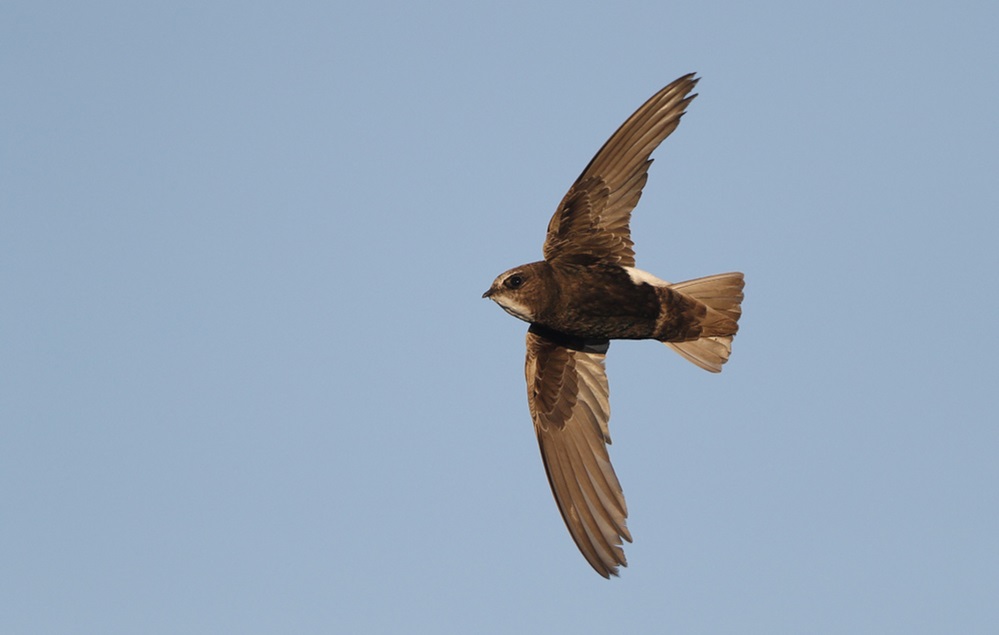
Zipping through African skies at high speeds, the Little Swift is a master of the air despite its diminutive stature. These social birds, barely reaching 33 cm (13 inches) in wingspan, are smaller than their common swift cousins.
Their plumage is mostly black with a contrasting white rump and throat, making them recognizable as they flit through the air. Unlike swallows that perch on wires, Little Swifts have very short legs and can only cling to vertical surfaces.
They spend most of their days on the wing, catching insects in their beaks and even drinking while flying. These vocal birds are often seen in large groups, swirling and calling as they acrobatically maneuver through the air.
Leopard Tortoise
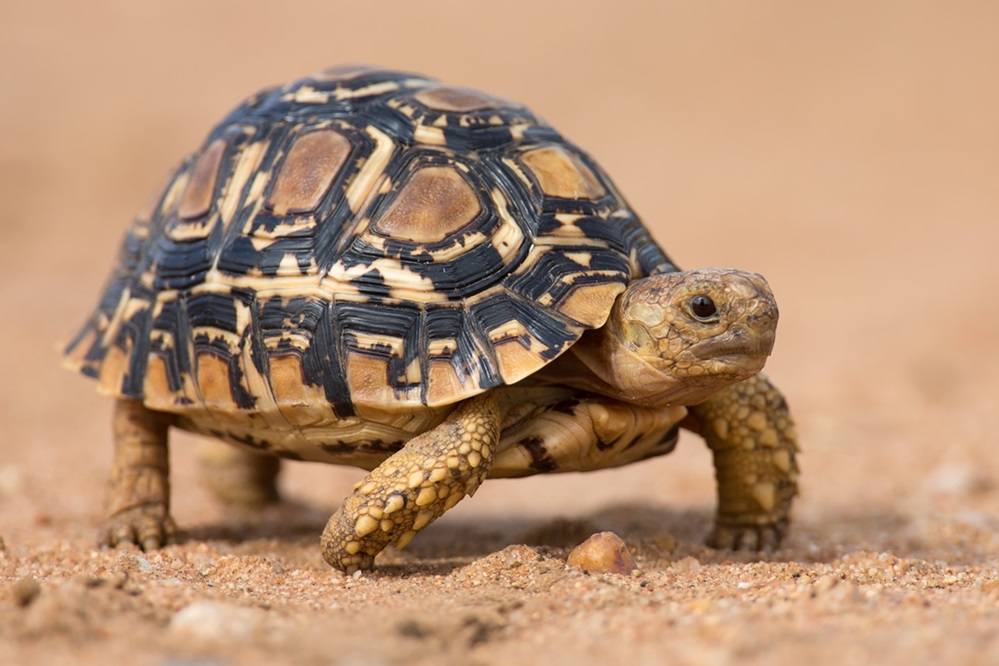
The leopard tortoise, a captivating resident of the savannas and grasslands of sub-Saharan Africa, is named for its beautifully patterned shell. This land dweller is one of the largest tortoises in the world, with adults reaching up to 70 cm (28 inches) in carapace length and weighing over 40 kg (88 pounds).
Their high-domed carapace, often adorned with bold black and yellow spots or blotches, provides excellent protection from predators. Juveniles tend to be more vibrantly colored, with their markings slowly fading to brown or grey as they mature.
Leopard tortoises are herbivores, spending a significant portion of their day grazing on grasses, leaves, and succulent plants. Their powerful jaws and sharp beaks allow them to tear through tough vegetation.
Despite their slow and methodical pace, leopard tortoises can live for over 100 years, making them true residents of the African savanna for generations.
Long-tailed Widowbird
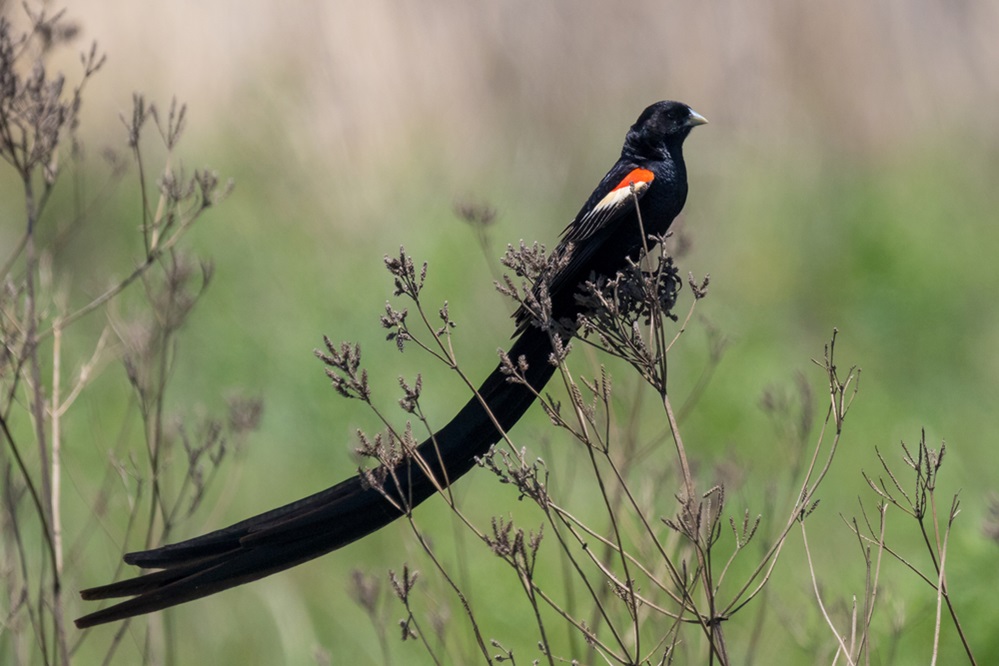
Adorned in dramatic black plumage, the long-tailed widowbird is a dazzling resident of African grasslands and savannas.During breeding season, males transform into aerial showmen.
Their black feathers are offset by a flash of red and white on their wings, and most strikingly, by an enormously elongated tail. These tails, composed of up to twelve feathers, can be several times the length of the bird’s body!
Despite the impressive display, this magnificent tail comes with a practical drawback. It makes them less maneuverable in flight, especially during harsh weather. However, females seem to favor males with the longest tails, suggesting an evolutionary advantage for this extravagant ornament.
Outside the breeding season, both sexes revert to a more subdued streaky brown plumage, and the males lose their extraordinary tails. These fascinating birds are social creatures, often seen in mixed flocks with other widowbird species, feeding on insects and seeds.
Lovebird
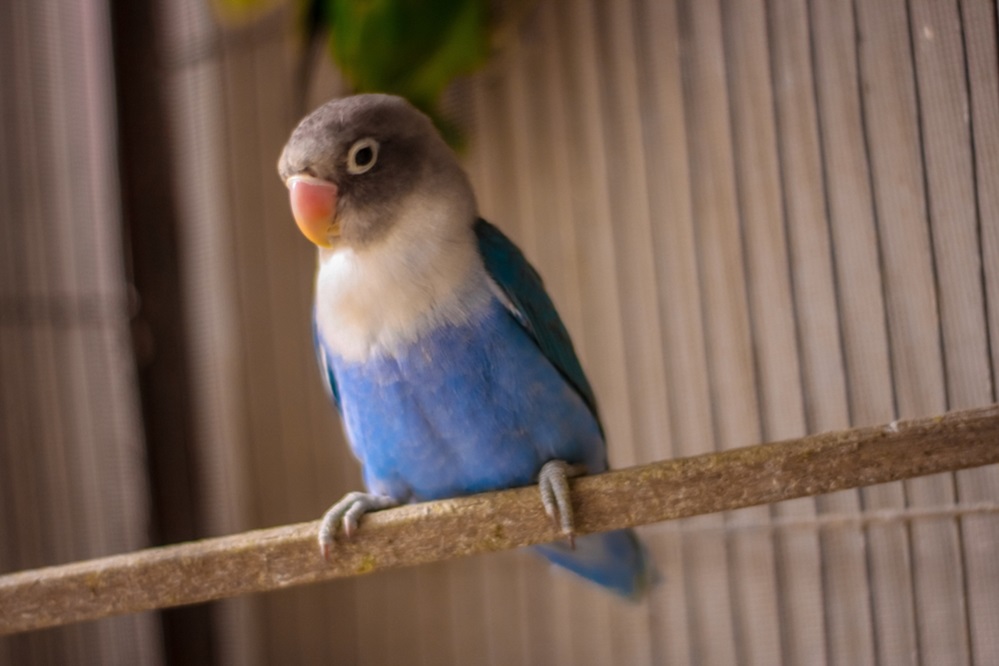
Affectionately named for their strong pair bonds, lovebirds are small parrots native to the African continent and the island of Madagascar. These social and charming birds are known for their vibrant plumage, which can range from brilliant reds and greens to soft blues and yellows.
They typically measure 13-17 centimeters (5-7 inches) in length and have a stocky build, short blunt tails, and relatively large, sharp beaks.
Lungfish

The lungfish, a living fossil found in freshwater habitats of Africa, Australia, and South America, defies categorization. These lobe-finned fish possess a unique ability to breathe air, a crucial adaptation for surviving in seasonal swamps and rivers that can dry up during hot and dry periods.
Lungfish have a long, eel-like body and a single lung that allows them to gulp atmospheric oxygen when water becomes scarce. They burrow into the mud and enter a state of estivation, a period of dormancy, to survive these harsh conditions. During this time, they breathe air through their modified lung and can remain buried for months, emerging when the rains return.
This remarkable ability, along with their resemblance to lobe-finned fish that are thought to be ancestors of land vertebrates, makes the lungfish a vital link between the aquatic and terrestrial worlds.
Mandrill
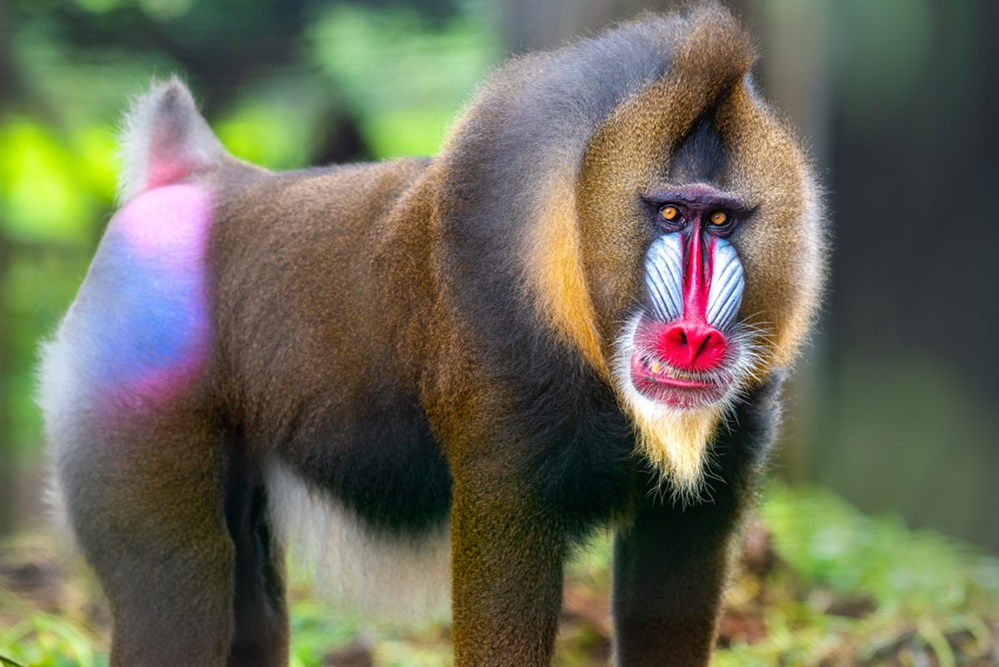
With a face that could stop a stampede, the mandrill reigns supreme as the world’s largest Old World monkey. These stocky primates, dwelling in the rainforests of Central Africa, are a captivating sight with their vibrant colors.
Males boast a kaleidoscope of facial features, with bright red and blue hues contrasting sharply with yellow beards and prominent ridges on their elongated snouts. Females, while less colorful, share the characteristic short tail and powerful build.
Living in large troops with complex social structures, mandrills are primarily omnivores. Their days are spent foraging on the forest floor, feasting on a diverse diet of fruits, leaves, insects, and even small reptiles and amphibians.
Marabou Stork

Towering over the African plains, the marabou stork is a scavenger with an unmistakable presence. Standing nearly five feet tall with a wingspan exceeding eight feet, this enormous bird is the largest stork in Africa.
Despite its impressive size, the marabou isn’t known for its graceful beauty. Its bald head and long, wrinkled neck give it a somewhat vulture-like appearance, further accentuated by its scruffy feathers and a large, inflatable red throat pouch.
While not the most attractive bird, the marabou plays a vital role in the ecosystem. These scavengers act as nature’s cleanup crew, consuming carrion, scraps, and even feces, helping to prevent the spread of disease. They often share their meals with vultures, and their dominance allows them to claim the best morsels first.
Meerkat

Standing sentinel on the African savanna, the meerkat is a social marvel known for its cooperative lifestyle. These small, slender mammals, barely reaching a foot tall, live in groups called mobs. Within these mobs, a strict hierarchy reigns, with a dominant pair keeping watch while others forage for food.
Their most iconic behavior is undoubtedly standing upright on their hind legs, scanning the horizon for danger. This crucial role is often taken on by pups as they gain experience, while adults keep a watchful eye.
Meerkat communication is a symphony of barks, yips, and whistles, conveying everything from warnings about predators to the location of food sources. Despite their small size, cooperative living and vigilance make meerkats surprisingly successful predators, feeding mainly on insects and small animals.
Mongoose

The mongoose, a fearless inhabitant of sub-Saharan Africa and parts of Asia, is renowned for its scrappiness and surprising resilience. These slender mammals, with short legs and bushy tails, come in various species, each with unique adaptations.
One of their most celebrated feats is their battle with venomous snakes. Mongoose species known as herpestes are particularly adept at dodging snake strikes and delivering quick bites, neutralizing the venom with a specific protein in their bodies.
However, their diet is not limited to such dangerous prey. Mongooses are opportunistic omnivores, feeding on insects, lizards, rodents, eggs, and even fruits. They are highly social creatures, living in groups called “mobs” that work together to raise young, defend territory, and hunt for food.
Monitor Lizard
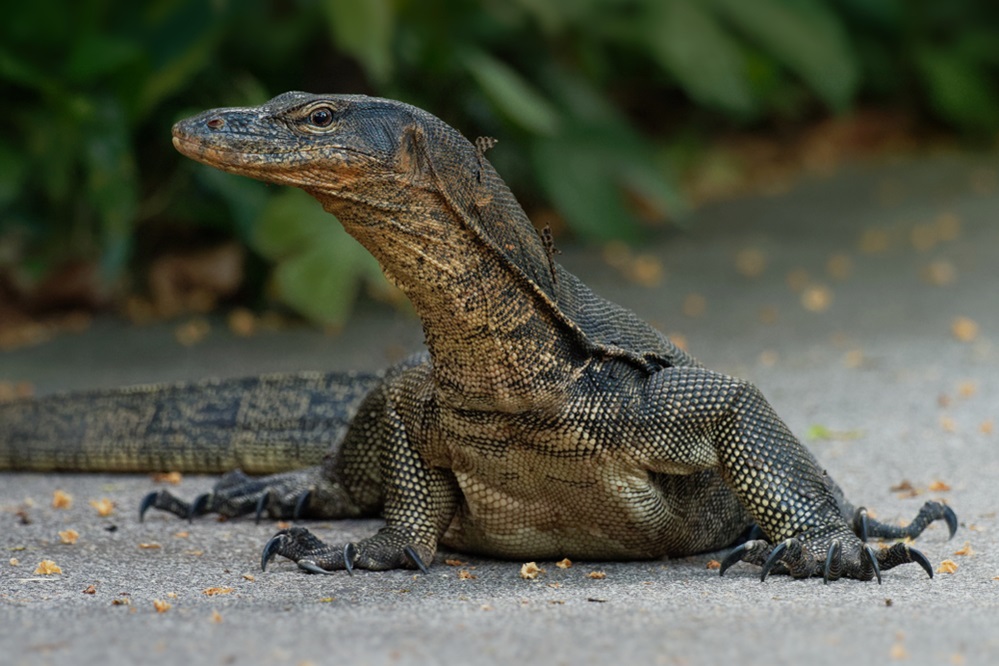
Ruling as the undisputed kings of lizards in Africa, monitor lizards are giants with a prehistoric charm. These powerful reptiles come in a variety of shapes and sizes, with the Komodo dragon holding the crown as the largest living lizard.
Their muscular bodies are built for both speed and power, aided by sharp claws and a long, thick tail that serves as a counterbalance and a formidable weapon.
Monitor lizards are intelligent predators, using their keen sense of smell and excellent eyesight to track down prey. Their long, forked tongues help them taste the air and detect hidden creatures. Unlike most lizards, monitor lizards are carnivores, with a diverse diet that includes insects, birds, small mammals, and even carrion.
Some larger species, like the Nile monitor, are skilled swimmers and can take down impressive prey like fish and small crocodiles. Despite their fearsome appearance, monitor lizards play a vital role in their ecosystems, controlling rodent populations and acting as scavengers.
Namaqua Dove

A small but resilient bird, the Namaqua Dove graces the sub-Saharan African landscape, as well as parts of Arabia and Madagascar. This sole member of the genus Oena is a type of pigeon, though its delicate build and swift flight distinguish it from its larger cousins.
Namaqua Doves come dressed in a plumage of soft browns and greys, offering excellent camouflage amidst the grasslands and savannas they call home. These ground-dwelling birds are primarily vegetarians, spending their days foraging for seeds and fallen fruits.
However, a surprising adaptation comes into play when they raise their young. Namaqua Doves lack the crop, a specialized food storage organ found in most pigeons, but they compensate with their “milk.” This protein-rich liquid, produced by both males and females, nourishes their chicks during the crucial nesting period.
Namaqua Sandgrouse

Soaring gracefully across the arid landscapes of southern Africa, the Namaqua Sandgrouse is a master of desert adaptation. These plump, pigeon-like birds, roughly the size of a common crow, are perfectly outfitted for life in the harsh environment.
Males boast a striking appearance with a buff head, chest, and contrasting black and white bands, while females and juveniles are more cryptically colored with various shades of brown and white speckles.
Namaqua Sandgrouse are not just visually interesting; they possess a unique water-transporting ability. Adult males have specially adapted belly feathers that can hold water even during flight, allowing them to carry precious moisture back to their chicks at the nest, which can be located up to 30 kilometers away from water sources. This remarkable adaptation is crucial for the survival of their offspring in the scorching desert heat.
Nicator

The nicator, a captivating resident of the African savanna, isn’t your typical songbird. This medium-sized shrike, with its striking black and white plumage and a bold red patch on its chest, boasts a surprisingly diverse vocal repertoire.
Unlike the beautiful melodies of many songbirds, the nicator’s calls are a harsh mix of whistles, clicks, and screeches. But these seemingly chaotic sounds hold meaning. Nicators use their vocalizations for a variety of purposes, including attracting mates, defending territories, and communicating with other nicators.
These territorial birds are adept hunters, perching on prominent branches and scanning the ground for prey. With lightning-fast reflexes and a sharp hooked beak, they snatch insects, lizards, and even small rodents, making them efficient predators in their savanna habitat.
Nightjar
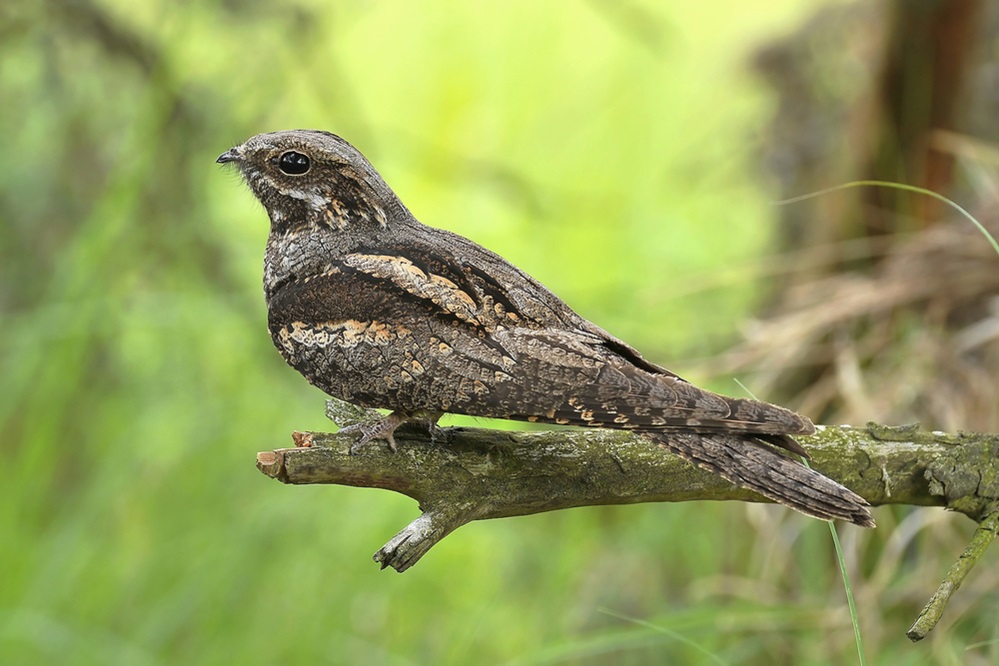
Cloaked in darkness, the nightjar isn’t your typical bird. These nocturnal insectivores, found across much of Africa, Europe, and Asia, are masters of the night sky. Their long, pointed wings and wide gape allow for silent, agile flight as they hunt for flying insects.
While their brown or grey plumage provides excellent camouflage during the day, when perched motionless on a branch, their true marvel lies in their voice. Nightjars are renowned for their haunting, ethereal calls that echo through the darkness. These calls vary depending on the species, and males often use them to attract mates and defend their territory.
Despite their nocturnal lifestyle, some nightjar species exhibit an unusual behavior called ‘crepuscular flight’. This twilight dance involves spectacular displays of aerial acrobatics as they snatch insects just after sunset or before sunrise.
Nile Crocodile
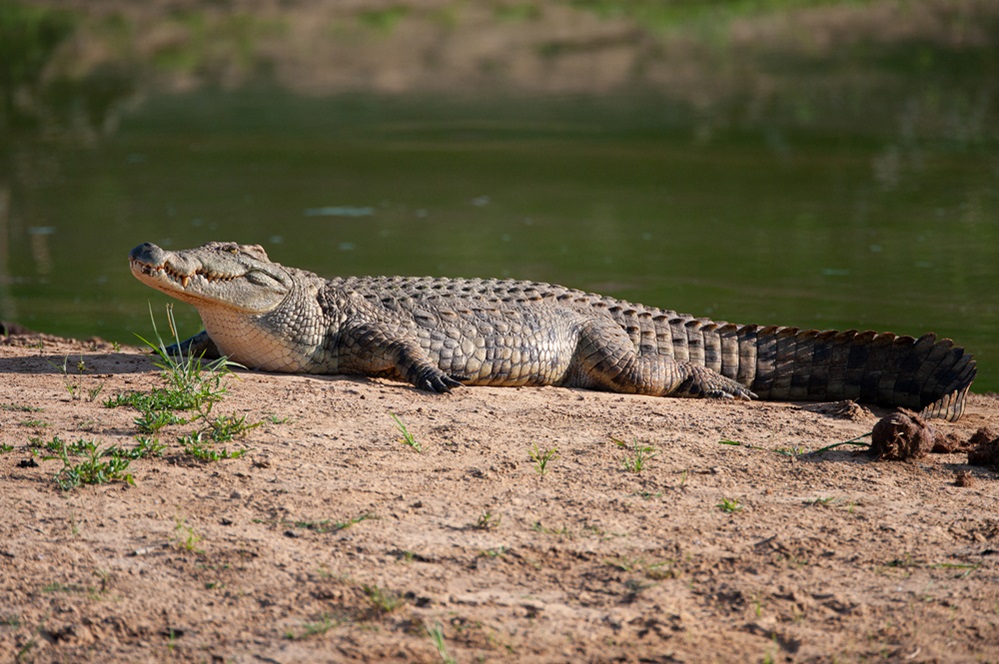
The Nile crocodile, a titan lurking in the murky depths of sub-Saharan Africa’s freshwater habitats, reigns supreme as the continent’s largest reptile. These prehistoric-looking creatures can grow up to six meters (20 feet) in length, with males significantly larger than females.
Their powerful bodies are built for stealth and ambush, with streamlined bodies and powerful tails that propel them through the water with surprising speed. Nile crocodiles have a fearsome reputation for a reason.
Their massive jaws are lined with sharp teeth perfectly designed for crushing prey, which ranges from fish and birds to large mammals like zebras and wildebeest. Despite their aquatic nature, Nile crocodiles also spend time basking on riverbanks, a behavior that helps regulate their body temperature.
While a threat to humans if provoked, Nile crocodiles are a crucial part of the African ecosystem, playing a vital role in maintaining healthy waterways and keeping prey populations in check.
Nubian Ibex

Towering over the rocky mountains and arid plains of northern and eastern Africa, the Nubian Ibex is a surefooted master of its harsh environment. The smallest of the ibex species, these agile wild goats stand around 65 to 75 centimeters (26 to 30 inches) tall at the shoulder.
Nubian Ibex are sexually dimorphic, with males sporting a dark brown mane running down their backs and significantly larger horns compared to the females. Their light tan coat, white underbelly, and black legs with white markings provide excellent camouflage against the rocky terrain.
These herbivores are well-adapted to survive on a diet of leaves, fruits, and grasses found in their arid habitat. Nubian Ibex are social creatures, living in herds of up to 20 individuals.
Okapi

The okapi, a creature resembling a living myth, stands out in the dense rainforests of the Democratic Republic of the Congo. This elusive relative of the giraffe is cloaked in a velvety coat of deep chestnut brown, with bold zebra-like stripes adorning its legs and rump.
Despite its long neck and large, expressive ears, the okapi is surprisingly short-legged compared to its giraffe cousin. Its long, prehensile tongue, much like a giraffe’s, is a key tool for stripping leaves from the understory foliage, its primary source of food.
Okapis are solitary creatures, except during breeding season, and are perfectly adapted to their secretive rainforest existence. Their silent movements and excellent camouflage amongst the dappled sunlight filtering through the leaves make them a rare sight in the wild.
Olive Baboon
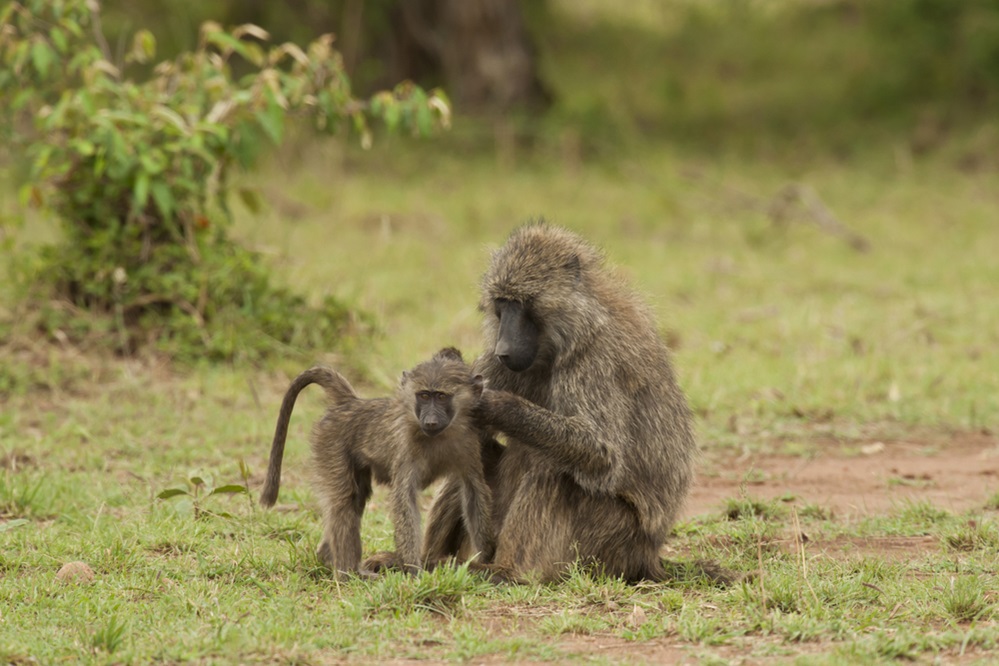
The olive baboon, aptly named for its greenish-gray coat, is a highly social and intelligent primate dwelling in the savannas, woodlands, and even some mountainous regions of sub-Saharan Africa.
These boisterous primates, with the males sporting a mane and both sexes sporting elongated dog-like muzzles, live in large troops with complex social hierarchies. Communication is key within these troops, with a rich repertoire of vocalizations, facial expressions, and body language used for everything from maintaining order to coordinating group activities.
Olive baboons are primarily omnivores, with their strong jaws and dexterous hands perfectly adapted for a diet that includes fruits, leaves, insects, and even small mammals. Despite their sometimes-raucous nature, olive baboons play an important role in their ecosystem by dispersing seeds through their eating habits and helping to control insect populations.
Oribi

The oribi, a petite antelope found throughout eastern, southern, and western Africa, is all about grace and agility. Standing just over shoulder-height at around 50 centimeters, these nimble creatures are perfectly adapted for navigating tall grasses and dense savannas.
Their slender build features a slightly raised back, a long neck, and powerful legs that propel them in quick bursts. Oribi come in a beautiful coat of tawny yellow to rufous brown on top, contrasting with a clean white underside.
Both males and females possess short, curved horns, adding to their elegant look. Unlike many grazers, oribi are primarily browsers, selecting leaves, fruits, and herbs for their diet. They are territorial and typically solitary creatures, except during breeding season.
Oryx
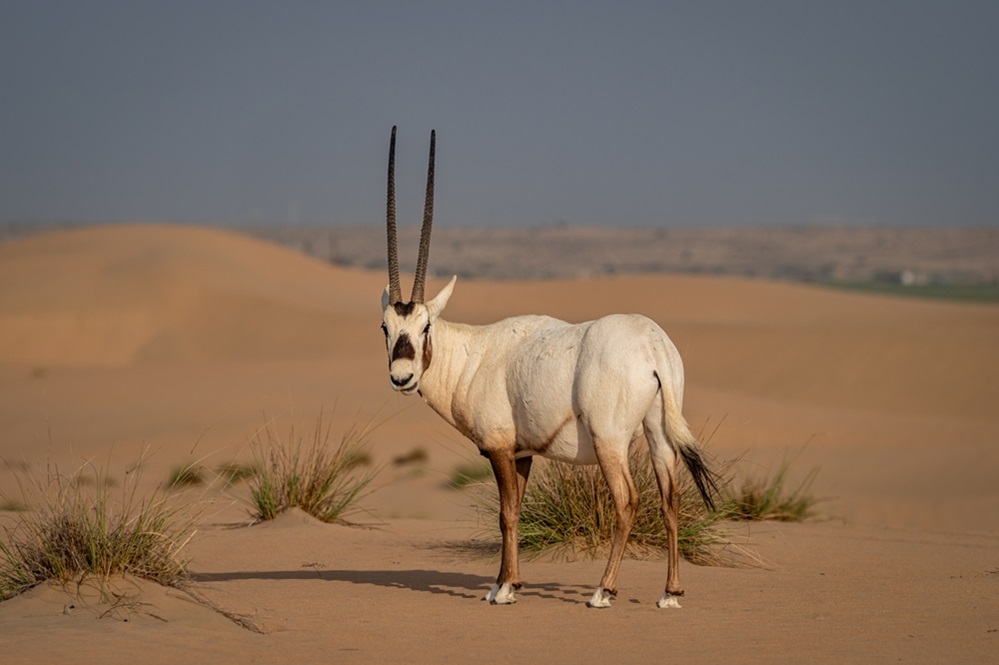
The oryx, a majestic antelope gracing the hot, dry plains of Africa and the Arabian Peninsula, embodies resilience and adaptation. These large-bodied creatures, with their straight horns sweeping back from their heads, come in a few different species, each with its own unique flair.
The Arabian oryx, with its dazzling white coat and black facial markings, is an iconic symbol of desert beauty. Oryxes are built to thrive in harsh environments. Their pale coats reflect sunlight, keeping them cool.
Their powerful legs allow for efficient travel across vast distances, and they can even go for extended periods without drinking, obtaining water from the plants they consume.
Ostrich

The ostrich, reigning supreme as the largest living bird, is a marvel of the African savanna. These flightless giants stand tall, reaching up to nine feet with powerful legs built for running. Their bodies are adorned with black and white feathers, with males boasting a striking display of white plumage and bright red or blue skin on their necks.
Despite their impressive size, ostriches are surprisingly agile. Their long, muscular legs propel them at speeds exceeding 40 miles per hour, making them the fastest land birds on Earth. Ostriches are herbivores, spending a significant portion of their day grazing on grasses, fruits, and leaves.
Their keen eyesight helps them spot predators from afar, and a myth persists that they bury their heads in the sand in danger. In reality, ostriches lie flat on the ground with their heads and necks pressed close to the earth, making them appear smaller and harder to detect.
These fascinating birds live in nomadic groups, with females laying their eggs in a communal nest. Despite their large size, ostrich chicks are precocial, meaning they can walk and feed themselves shortly after hatching.
Oxpecker

The oxpecker, a small, insectivorous bird native to sub-Saharan Africa, embodies a fascinating example of symbiosis with large mammals. These starlings, with their reddish-brown plumage and sharp beaks, perch on the backs of rhinoceroses, buffaloes, and zebras.
They act as living groomers, picking ticks, insects, and larvae from the skin of their hosts. This not only benefits the large mammal by providing pest control and wound cleaning, but also provides the oxpecker with a constant source of food. However, their diet isn’t limited to just insects.
Oxpeckers will also feed on blood oozing from open wounds on their host, a behavior that has earned them the nickname “tickbird.” Despite this slightly gruesome habit, the symbiotic relationship between oxpeckers and large mammals remains a remarkable example of co-evolution in the African savanna.
Pangolin

The pangolin, a fascinating mammal native to Africa and Asia, is tragically the most trafficked mammal in the world. These unique creatures are covered in tough, overlapping scales, acting like a suit of armor.
Despite their reptilian appearance, pangolins are actually mammals with a fondness for ants and termites. Their long, sticky tongues are perfectly adapted for snatching these insects from deep within their tunnels.
Sadly, their impressive scales are prized in traditional medicine, leading to a surge in illegal poaching. Pangolins are also solitary and nocturnal, making them difficult to study and conserve.
Partridge

Despite their frequent mention in the carol “The Twelve Days of Christmas,” partridges aren’t strictly a Christmas miracle. These small, ground-dwelling game birds are actually native to the Old World, inhabiting Europe, Asia, and Africa.
Larger than quail but smaller than pheasants, partridges come in a variety of species with distinct appearances. Some, like the red-legged partridge, sport striking plumage with reddish-brown bodies and chestnut markings.
Others, like the gray partridge, have a more subdued coloration that provides excellent camouflage amidst fields and grasslands. Partridges are primarily seed-eaters, but their diet can also include insects, berries, and leaves. These birds are known for their explosive take-off when startled, often flushing from cover with a loud whirring sound.
Patas Monkey

The patas monkey, a champion of the African savanna, defies expectations for primates with its exceptional speed and terrestrial lifestyle. Built for running, these monkeys boast long, slender limbs and a deep chest, resembling a slender greyhound.
Unlike most monkeys that swing through trees, the patas monkey is primarily ground-dwelling, navigating the grasslands with impressive agility. Holding the title of the fastest primate, they can reach speeds of up to 55 kilometers per hour (34 mph) in short bursts – a remarkable feat that allows them to outrun many predators.
Social creatures, patas monkeys live in troops of up to 60 individuals with complex social hierarchies. While females lead the group, the unmistakable white moustache and brighter coloration of the males readily distinguish them.
Pelican
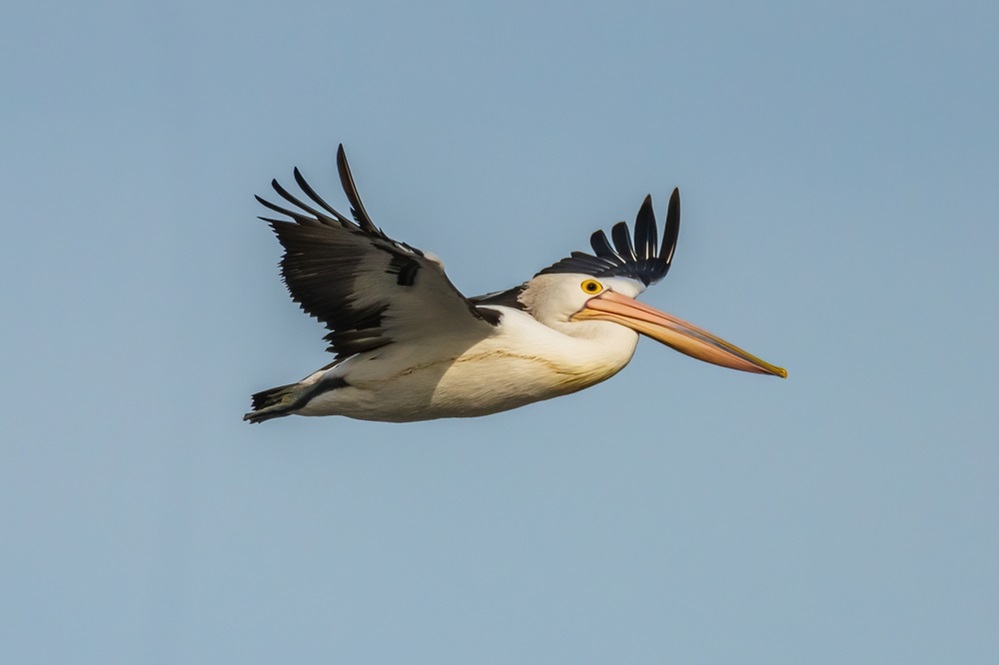
Soaring majestically across the skies and skimming the water’s surface, the African pelican, also known as the white pelican, is a captivating resident of African wetlands. These birds boast an impressive wingspan, reaching up to nearly 11 feet, and a distinctively large bill – the biggest of any bird in Africa!
Their plumage is a stunning contrast of white and black, with a bright orange beak pouch that inflates dramatically when capturing prey. African pelicans are skilled cooperative hunters, often working together to herd fish towards shallow water where they scoop them up in their massive bills.
Pied Crow
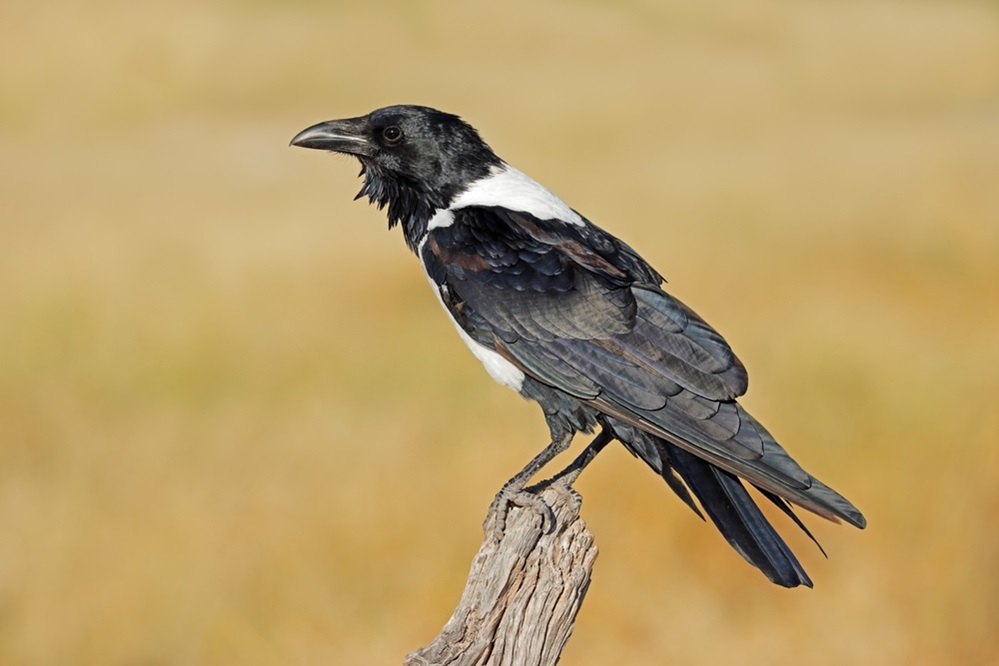
The pied crow, a common sight across sub-Saharan Africa, is a bird of striking contrasts. These intelligent corvids are named for their distinct plumage – a glossy black head, neck, and wings contrasting sharply with a white breast and belly.
While roughly the size of a European carrion crow, pied crows have a proportionally larger bill, longer tail and wings, and noticeably stronger legs. These physical adaptations make them adept scavengers, thriving on a varied diet that includes insects, reptiles, carrion, fruits, and even food scraps from human settlements.
Pied crows are highly social creatures, often seen foraging in pairs or small groups. They are monogamous, forming strong breeding pairs that work together to raise their young.
While not known for mimicry to the same extent as some other corvids, pied crows are remarkably intelligent birds. They demonstrate problem-solving skills and complex communication through a variety of vocalizations, including loud caws and quieter clicks.
Porcupine
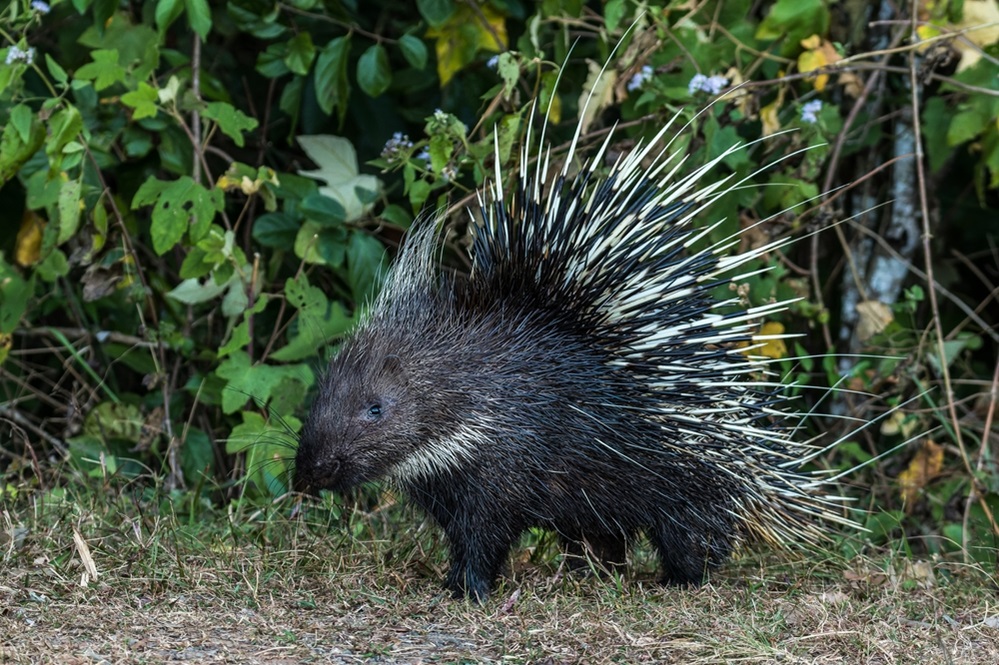
Despite their lumbering gait, porcupines are well-equipped for defense in the African savannas and beyond. These rodents, the third-largest behind capybaras and beavers, are instantly recognizable by their coat of sharp spines, called quills. These stiff hairs act as a formidable deterrent to predators.
Contrary to popular belief, porcupines cannot launch their quills, but if an attacker makes contact, the barbed quills easily detach and become lodged in the flesh, causing irritation and discomfort.
While some species are primarily vegetarians, happily munching on leaves, fruits, and bark, others are more adventurous eaters and may include insects and small animals in their diet.
Overall, these prickly characters play a vital role in their ecosystems, helping to disperse seeds and control plant growth through their browsing habits.
Puffadder
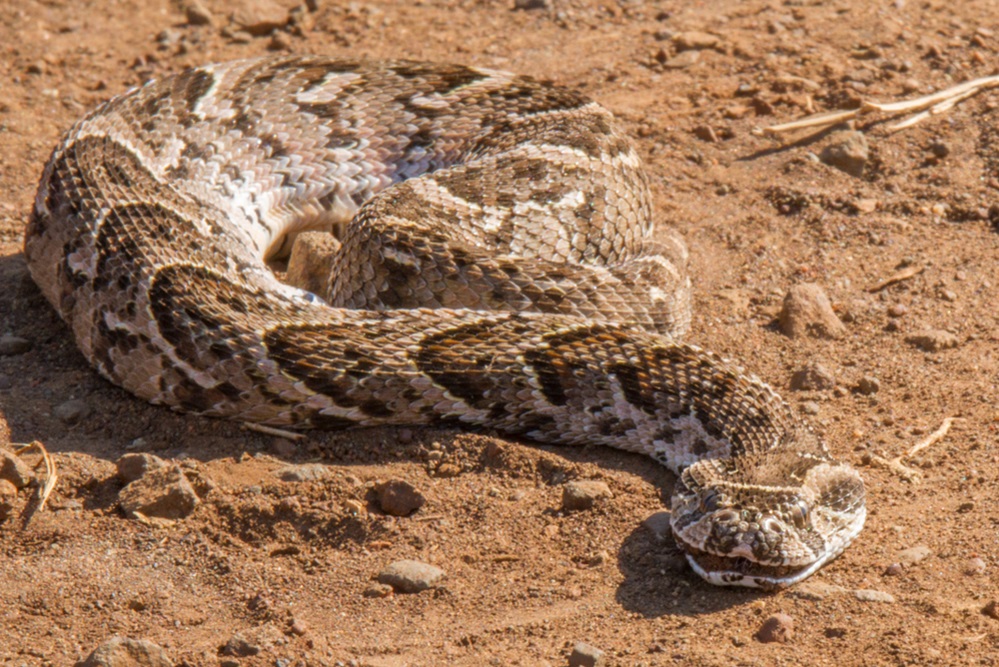
The puffadder, a viper found throughout sub-Saharan Africa, is a master of disguise and a patient predator. Unlike its more active counterparts, the puffadder prefers to lie in wait for unsuspecting prey.
Its stocky body with a broad, triangular head is perfectly camouflaged amongst dry leaves and rocky outcrops thanks to its patterned scales, typically ranging from brown to grey with darker splotches.
When threatened, the puffadder inflates its neck, hence its name, and hisses loudly as a warning. However, this viper isn’t afraid to strike if necessary. Its venom is highly cytotoxic, causing tissue damage and potentially leading to serious complications if left untreated.
Python

The python is one of the largest snakes in the world and belongs to the family Pythonidae. These constrictors are native to Africa, Asia, and Australia, and can be found in a variety of habitats including grasslands, savannas, and rainforests.
They are ambush predators that use their muscular bodies to coil around their prey, suffocating them before swallowing them whole. Pythons come in a variety of sizes, with the largest species, the reticulated python, reaching up to 32 feet (10 meters) in length.
They are solitary animals that come together only to mate. Female pythons are larger than males and incubate their eggs until they hatch.
Red-billed Quelea

Soaring through the African skies in mesmerizing flocks that resemble smoke billowing across the plains, the Red-billed Quelea holds the title of the most abundant wild bird species on Earth.
These sparrow-sized birds, with their predominantly brown plumage and distinctive red bills (turning yellow-orange in females during breeding season), form colonies numbering in the millions.
Despite their impressive numbers, they can be a double-edged sword for farmers. While they primarily feed on grass seeds, they can transform into a devastating force when targeting crops like sorghum and millet, consuming vast quantities in a single day.
This feeding behavior has earned them the nickname “feathered locusts.” Red-billed Quelea are highly social creatures, breeding in vast colonies and undertaking impressive migrations in search of food sources.
Red-capped Lark

Adorning the grasslands and open fields of sub-Saharan Africa, the red-capped lark is a small but lively songbird. Measuring around 14-15 centimeters tall, these larks are easily identified by their diagnostic features. A bright rufous cap, often raised like a miniature crest, sits atop their streaked grey-brown upperparts.
In contrast, their underparts are a clean white, often with a reddish tinge on the chest. While both sexes are similar in appearance, juveniles lack the vibrant cap and chest colors, sporting dark spotting on the breast and white spots on their upper bodies. Red-capped larks are primarily ground dwellers, adept at running and foraging for seeds and insects amongst the grasses and low-lying vegetation.
However, they are not shy singers. Often perched on a rock or grass tuft, they deliver melodious and varied songs, sometimes incorporating mimicry of other birds, making them a delight for birdwatchers.
Ring-necked Dove

Graceful and widespread, the ring-necked dove is a familiar sight throughout Africa and parts of Asia. These slender birds, with a delicate build and soft cooing call, are a welcome addition to urban and rural areas alike.
Their most distinctive feature is the namesake ring – a semi-collar of black feathers on their nape. While both sexes sport this ring, males are generally larger and have a more iridescent plumage. Primarily seed-eaters, ring-necked doves are ground foragers, often seen in parks, gardens, and agricultural fields, where they glean fallen seeds and spilled grains.
They are monogamous birds, forming strong pair bonds and working together to raise their young. Their flimsy platform nests, built in trees or on ledges, often house two white eggs that both parents take turns incubating.
Red Fox
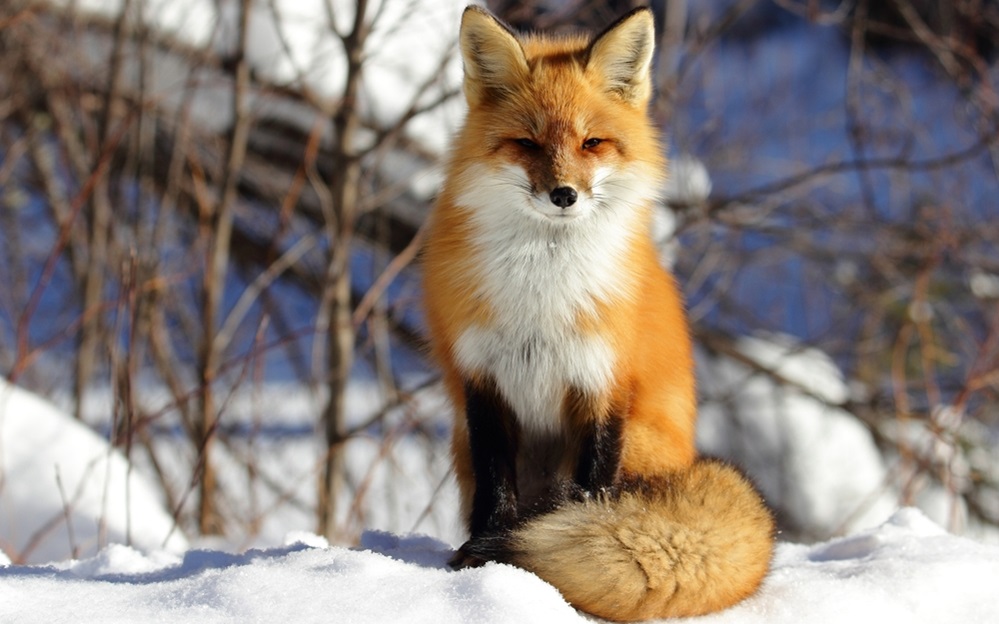
Despite its name, the African red fox isn’t quite the same as its cunning cousin found in Europe and North America. This slender fox, inhabiting the northern parts of Africa, belongs to a separate lineage known as the Rüppell’s fox (Vulpes rueppellii).
While they share a similar reddish-brown coat with black markings on their legs and ears, the African red fox has a more slender build and lacks the bushy white-tipped tail of its European namesake.
These opportunistic omnivores are perfectly adapted to their arid environment, with excellent hearing and sharp eyesight allowing them to hunt small mammals, birds, reptiles, and insects.
They are known to be resourceful scavengers as well, readily consuming carrion or scraps left behind by other predators. Unlike their European counterparts, African red foxes tend to be solitary creatures, except during breeding season.
Reedbuck
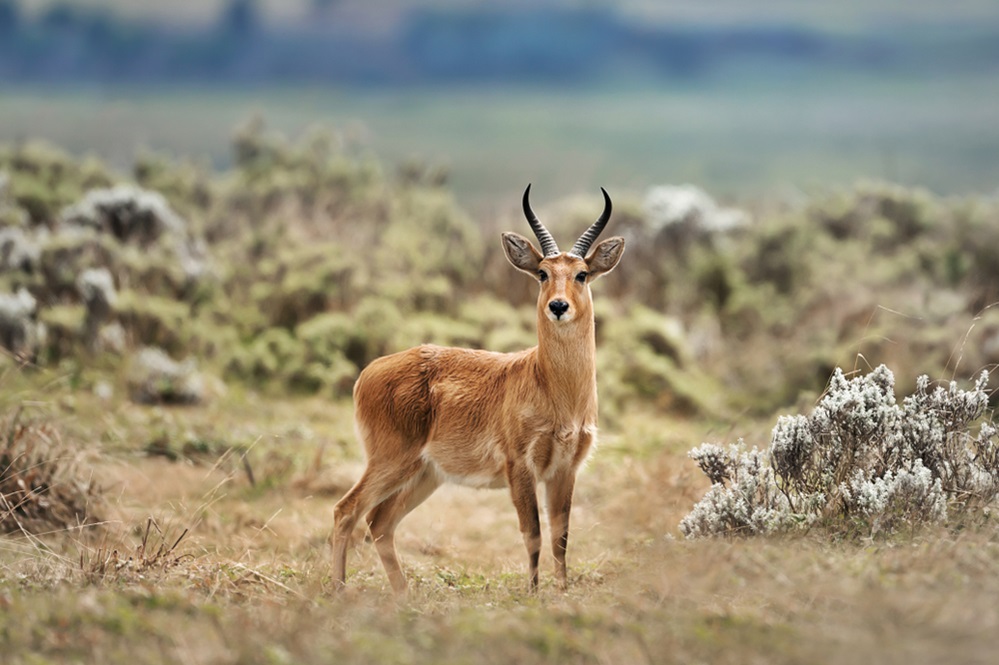
Graceful grazers of the African wetlands, reedbucks are a diverse group of medium-sized antelopes perfectly adapted to their marshy habitat. With slender bodies and long legs, they navigate tall reeds and grasses with ease.
Their most distinctive feature is their coat, which varies depending on the species. The bohor reedbuck, for instance, sports a rich reddish-brown coat, while the mountain reedbuck has a more grayish-brown coloration, providing excellent camouflage amidst their chosen environment.
Both sexes possess horns, although the males’ tend to be longer and more robust. These horns are used for defense against predators and during dominance displays among males.
Reedbucks are primarily grazers, spending most of their day feeding on reeds, grasses, and other wetland vegetation. They are social creatures, living in herds of up to 20 individuals, with females forming the core social unit.
Rock Hyrax

Nicknamed the “dassie” in South Africa, the rock hyrax is a unique mammal often mistaken for a rodent, but with closer ties to elephants. These social creatures live in colonies of up to 80 individuals amongst the rocky outcrops of Africa and the Middle East.
Their stout bodies and short limbs are perfectly adapted for climbing, with specialized pads on their feet providing exceptional grip. Rock hyraxes are herbivores, spending their days basking in the sun and foraging for leaves, fruits, and flowers.
Despite their peaceful demeanor, they have a remarkable alarm call to warn others of approaching predators like eagles or leopards.
Royal Antelope

The Royal Antelope, aptly named for its diminutive size and regal posture, reigns supreme as the world’s smallest antelope, even smaller than rabbits. These pocket-sized creatures, found in the West African rainforest, stand a mere 25 centimeters (10 inches) tall at the shoulder and weigh a feathery 2.5-3 kilograms (5.5-6.6 pounds).
Despite their miniature stature, Royal Antelopes are surprisingly graceful, navigating the dense undergrowth with agility thanks to their long, slender legs. Their reddish-brown to golden-brown coat, contrasting sharply with their white underparts, provides some camouflage amidst the dappled sunlight filtering through the rainforest canopy.
These solitary and elusive creatures are primarily nocturnal, emerging under the cloak of darkness to feed on leaves, fruits, and fungi.
Sable Antelope

Graceful and powerful, the sable antelope is a jewel of the African savanna. These sexually dimorphic creatures showcase a stunning contrast between the sexes. Males stand out with their glossy black coats, a stark white belly patch, and a badger-like facial stripe.
Their impressive horns, curving dramatically backward, add to their majestic presence. Females, on the other hand, are slender and chestnut-brown, sporting shorter, less-curved horns.
Sable antelopes are social creatures, living in herds of up to 70 females and young, led by a single dominant male. These herds graze on grasses and leaves during the rainy season, venturing into grasslands for fresh shoots after annual fires.
Sacred Ibis
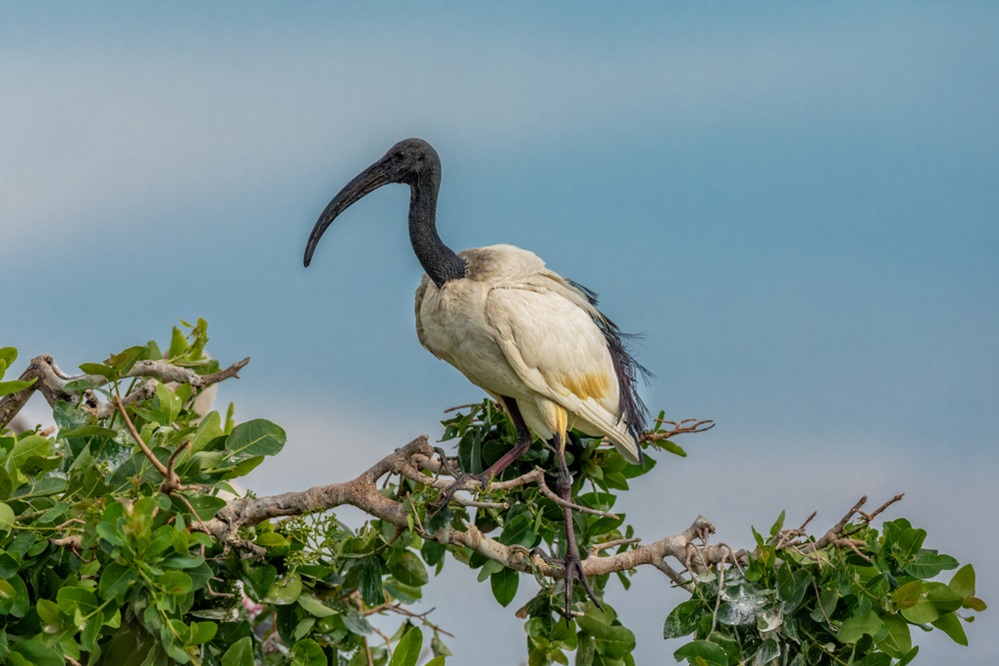
The sacred ibis, with its gleaming white body and black wingtips, wasn’t just a bird in Ancient Egypt; it was a revered religious symbol. Standing around 75 centimeters (30 inches) tall, these wading birds were linked to the god Thoth, associated with wisdom, knowledge, and writing.
For millennia, Egyptians mummified ibises as offerings to Thoth, believing the practice ensured safe passage to the afterlife. Millions of these mummified birds have been found in archaeological sites, a testament to their deep significance in Egyptian culture. Sadly, the sacred ibis is now regionally extinct in Egypt due to habitat loss.
However, these birds remain widespread across sub-Saharan Africa and parts of the Middle East, where they can be seen wading in marshes and mud flats, their long, curved beaks probing for aquatic prey.
Secretarybird

The secretarybird, a long-legged wonder of the African savannas and grasslands, stands out with its striking appearance and unique hunting style. Towering over most other birds of prey with their long legs, they resemble a secretary perched on stilts.
These elegant predators boast a magnificent crest of black feathers on their heads, earning them their namesake. But the secretarybird’s true weapon lies in its powerful, eagle-like talons.
Unlike most raptors, they spend much of their time on the ground, stalking their prey – primarily snakes, insects, and small mammals. With lightning-fast stomps and powerful kicks, they can stun or kill their prey with impressive efficiency. Secretarybirds are social birds, often hunting in pairs and even cooperating to take down larger prey.
Serval
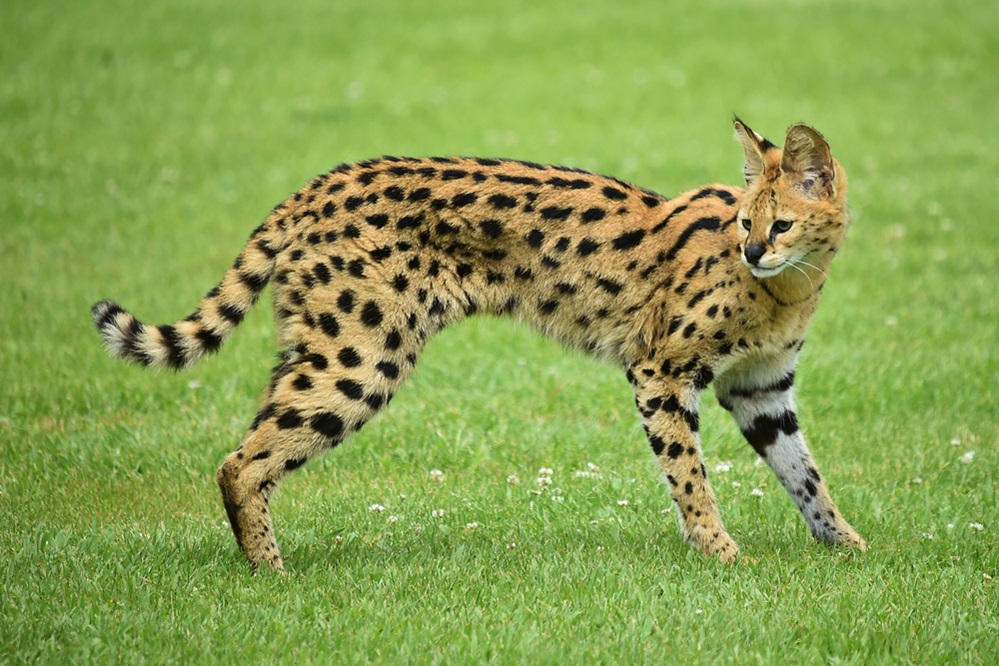
The Serval, known for its striking appearance and remarkable hunting abilities, is a medium-sized wild cat native to Africa. Characterized by its long legs, golden fur with black spots, and large ears, the Serval is an adept hunter, preying on rodents, birds, and insects with remarkable agility and precision.
These cats are often found in grasslands and savannas, where their unique physical features and hunting techniques help them thrive. Despite their wild nature, Servals have been domesticated to some extent, with some individuals kept as pets in certain parts of the world.
Shoebill Stork

The Shoebill Stork, a fascinating and enigmatic bird, is a majestic sight to behold in the wetlands of central tropical Africa. Its most striking feature is its massive, shoe-shaped bill, which can grow up to nine inches in length.
This formidable beak is a powerful tool used for catching its prey, primarily fish, frogs, and even small mammals. The Shoebill’s large size, reaching up to five feet in height with a wingspan of over eight feet, commands respect in its marshy habitat.
Despite its impressive appearance, the Shoebill is a solitary and elusive bird, often found standing motionless for long periods, waiting for the perfect moment to strike at its prey. Its unique appearance and elusive nature make the Shoebill Stork a captivating subject for wildlife enthusiasts and researchers alike.
Sitatunga

The Sitatunga, also known as the marshbuck, is a unique and elusive antelope species found in Central Africa’s wetlands and swamp regions. Known for its remarkable adaptation to aquatic environments, the Sitatunga has elongated, splayed hooves that help it navigate through muddy and swampy terrain with ease.
Their shaggy, reddish-brown coat provides excellent camouflage amidst the dense vegetation of their habitat. Males typically have spiral-shaped horns, while females are hornless.
Sitatungas are primarily crepuscular, meaning they are most active during dawn and dusk, and they are skilled swimmers, often submerging themselves almost completely to avoid predators.
Springhare

The Springhare, also known as Pedetes capensis, is a fascinating creature native to southern Africa. Resembling a small kangaroo, it boasts long, powerful hind legs, which enable it to leap great distances with remarkable agility.
Its fur is soft and dense, colored a mottled gray or brown, providing excellent camouflage in its natural habitat of grasslands and savannas. These nocturnal herbivores primarily feed on grasses and plants, using their strong front teeth to gnaw through tough vegetation.
Despite their adorable appearance, Springhares are solitary creatures, emerging from their burrows at night to forage for food, using their keen senses of hearing and smell to navigate the darkness.
Springbok
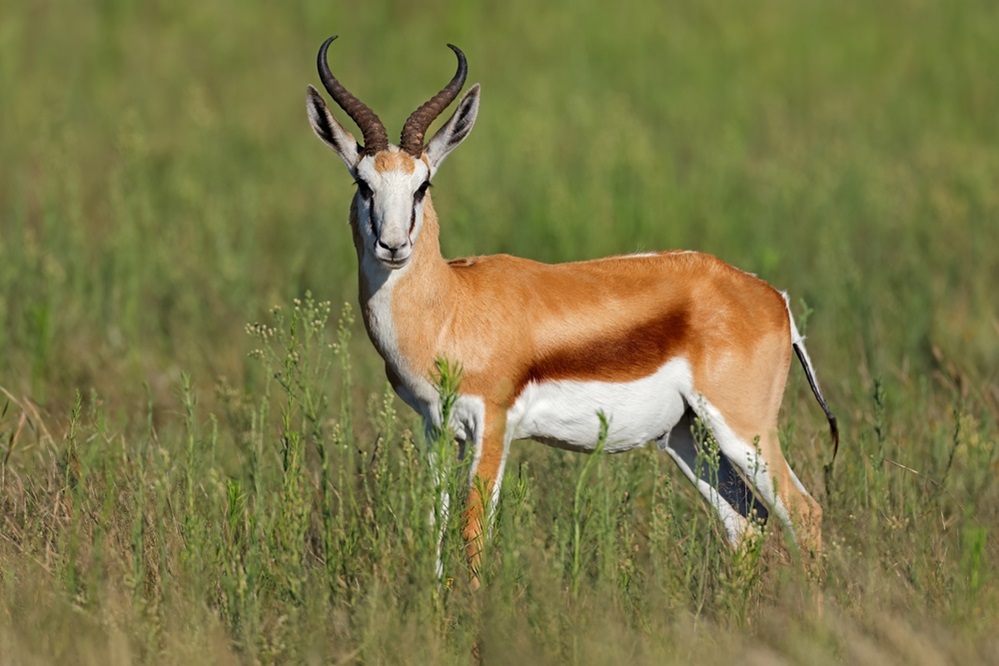
The Springbok, South Africa’s national animal, is a graceful and agile antelope known for its distinctive jumping display, from which it derives its name. These elegant creatures are found in the grasslands and open plains of southern Africa, where they graze on a variety of grasses and plants.
Springboks are known for their speed and can reach speeds of up to 60 kilometers per hour (37 mph) and leap distances of up to 13 feet in the air. Their striking appearance, with a reddish-brown coat and a white face and belly, makes them a symbol of beauty and vitality in the African savannah.
Spur-winged Lapwing

The Spur-winged Lapwing, also known as the Spur-winged Plover, is a striking bird characterized by its bold appearance and distinctive spurs on the wrists of its wings.
Found in wetlands, marshes, and grasslands across parts of Africa, Europe, and Asia, these lapwings are known for their loud, piercing calls and their fearless defense of their nests and territories. Their striking black and white plumage, coupled with their bright yellow facial wattles and red eyes, make them easily recognizable.
Squirrel

The African squirrel, a fascinating and diverse group of rodents, encompasses several species found across the continent’s varied habitats. From the tree-dwelling Smith’s bush squirrel to the ground-dwelling Cape ground squirrel, these creatures display a range of adaptations and behaviors.
African squirrels are known for their agility and intelligence, often seen bounding between branches or foraging for food on the forest floor. Their diet consists of nuts, seeds, fruits, and insects, making them vital in seed dispersal and maintaining ecological balance. These charismatic animals play an essential role in African ecosystems and are a joy to observe in their natural habitats.
Stanley's Bustard

Stanley’s Bustard, scientifically known as Neotis denhami, is a striking bird found in the grasslands and savannas of sub-Saharan Africa. Named after the 19th-century explorer Henry Morton Stanley, this bird is known for its impressive size and distinctive plumage.
The male Stanley’s Bustard is particularly striking, with a black and white speckled back, a white belly, and a bold black stripe running down its neck. Females are smaller and more subtly colored, with a brownish-gray hue that provides excellent camouflage in their habitat.
These bustards are known for their elaborate courtship displays, which involve puffing up their chest feathers and performing intricate dances to attract mates.
Suni
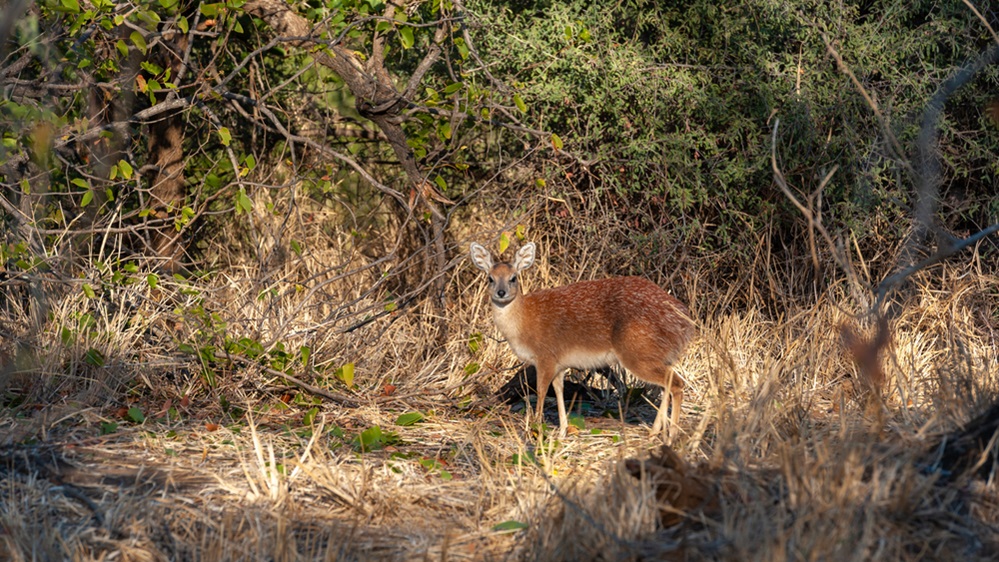
The Suni, scientifically known as Neotragus moschatus, is a small antelope species found in sub-Saharan Africa, particularly in woodlands and thickets. Known for its diminutive size, the Suni stands about 30-40 centimeters tall at the shoulder and weighs between 4-6 kilograms. Their reddish-brown coat is marked with white underparts, and males sport short, straight horns.
Despite their small size, Sunis are known for their agility and can reach speeds of up to 50 kilometers per hour when fleeing from predators. These solitary animals are primarily browsers, feeding on leaves, fruits, and twigs, and are most active during the early morning and late afternoon.
Tanzanian Guenon
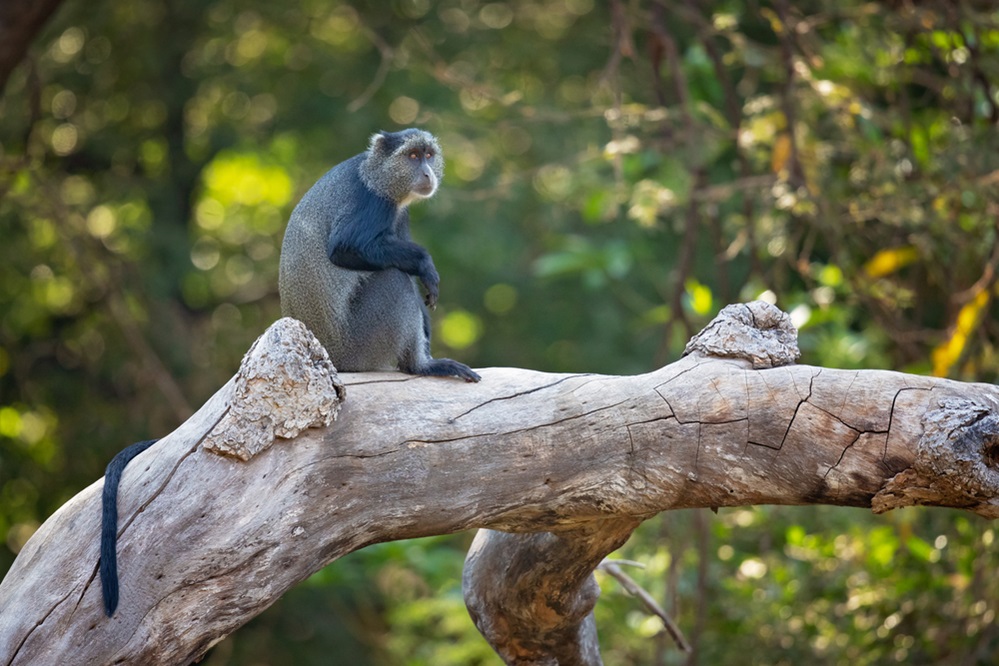
The Tanzanian Guenon, scientifically known as Cercopithecus mitis albogularis, is a captivating primate species endemic to Tanzania, primarily found in the lush forests of the Eastern Arc Mountains and the southern highlands of the country.
These monkeys are known for their distinctive appearance, characterized by a striking black coat with a white throat and chest, as well as prominent facial markings.
Their social structure is complex, living in groups of up to 15 individuals, led by a dominant male. They are primarily arboreal, spending much of their time in the canopy, where they forage for fruits, leaves, and insects.
Thomson's Gazelle

The Thomson’s Gazelle, scientifically known as Eudorcas thomsonii, is a graceful and agile antelope found in East Africa, particularly in savannas and grasslands.
Named after the Scottish explorer Joseph Thomson, these gazelles are known for their distinctive reddish-brown coats, white underbellies, and black stripes running along their sides, which help them blend into their surroundings and evade predators like cheetahs, lions, tigers, and wild dogs.
They are known for their incredible speed and agility, capable of reaching speeds of up to 50 miles per hour and executing impressive leaps and twists to escape predators.
Thomson’s Gazelles are herbivores, feeding primarily on grasses and herbs, and they often gather in large herds for safety, sometimes mingling with other herbivores like wildebeests and zebras. Their survival depends on their keen senses, remarkable speed, and the safety of their herds in the vast African plains where they roam.
Uganda Kob

The Uganda Kob, scientifically known as Kobus kob thomasi, is a medium-sized antelope species found mainly in Uganda, but also in parts of South Sudan, Ethiopia, Kenya, and Tanzania. Known for its striking appearance, the Uganda Kob features a reddish-brown coat with white underparts, a black patch of fur on its forelegs, and spiraled horns in males.
These antelopes are social animals, forming herds of up to 30 individuals, typically led by a dominant male. They inhabit savannas and grasslands, feeding primarily on grass and other vegetation.
Vervet Monkey

The Vervet Monkey, scientifically known as Chlorocebus pygerythrus, is a species of Old World monkey native to Africa. They are known for their distinct appearance, characterized by a black face, white fringe of hair around the face, and a long tail.
Vervet monkeys are highly social animals, living in groups called troops, which can consist of up to 50 individuals. These monkeys are primarily herbivores, feeding on a variety of fruits, leaves, flowers, and seeds, but they also consume insects and small vertebrates.
They are known for their vocalizations, which include alarm calls to warn the troop of predators. Vervet monkeys are adaptable creatures, able to live in a variety of habitats, including savannas, forests, and mountains. They play a crucial role in their ecosystems as seed dispersers and prey for predators such as leopards and eagles.
Violet-backed Starling

The Violet-backed Starling, scientifically known as Cinnyricinclus leucogaster, is a stunning bird native to sub-Saharan Africa. Its name aptly describes its appearance, as the male boasts a glossy, iridescent violet back that shimmers in the sunlight, contrasting sharply with its white belly.
Females, while less vibrant, display a beautiful mix of green and brown tones. These starlings are social birds, often found in flocks perched on trees or foraging for insects and fruits in open woodlands and savannas. Their melodious songs and striking plumage make them a delightful sight for birdwatchers and nature enthusiasts alike.
Warthog

The warthog, a robust member of the pig family, is renowned for its peculiar appearance and distinctive features. Found in savannas, grasslands, and woodlands of sub-Saharan Africa, these wild creatures are easily recognizable by their large, protruding tusks, which are actually modified canine teeth.
Their bodies are covered in sparse hair and their skin is gray or black in color, often wrinkled, providing them some protection from the harsh African sun. Warthogs are predominantly herbivorous, feeding on grasses, roots, and fruits, but they are also known to indulge in small insects.
Waterbuck
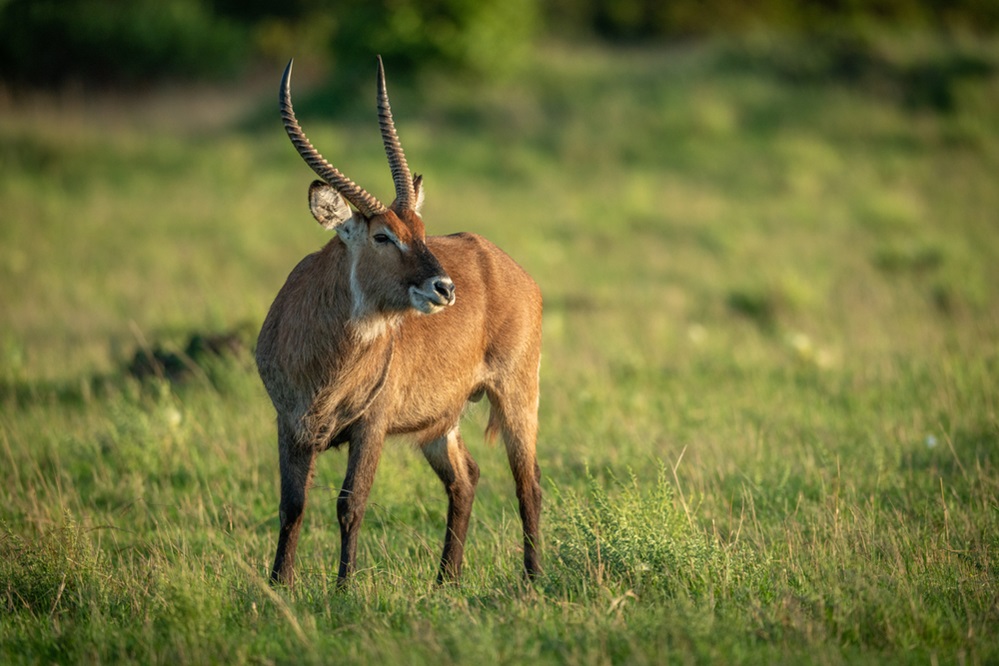
The Waterbuck, a large antelope species found in sub-Saharan Africa, is known for its distinctive appearance and habitat preference. Easily recognized by the white ring encircling its rump, which is thought to act as a visual signal to help individuals stay together in tall grass, the Waterbuck is primarily found near water sources such as lakes, rivers, and marshes. This dependence on water is reflected in its name.
With a shaggy, brown-grey coat that is darker in males than females, these herbivores are well-adapted to their wetland environments. Their long, spiral-horned males are known for their aggressive behavior during the mating season, often engaging in fierce battles to establish dominance and mating rights.
Wattled Crane

The Wattled Crane (Grus carunculatus) is a striking and majestic bird, known for its unique appearance and behavior. This large crane is predominantly found in wetland habitats across sub-Saharan Africa, where it feeds on aquatic plants, insects, and small vertebrates.
One of its most distinctive features is the fleshy red wattle hanging from its throat, which becomes more prominent during courtship displays. With its slate-grey plumage, white wings, and black and white neck, the Wattled Crane cuts an impressive figure as it gracefully moves through its wetland environment.
White Rhinoceros

The White Rhinoceros, scientifically known as Ceratotherium simum, is one of the largest and most iconic species of rhinoceros in the world. Found primarily in southern Africa, these magnificent creatures are characterized by their massive size, with males weighing up to 2,300 kilograms (5,000 pounds) and standing over 1.8 meters (6 feet) tall at the shoulder.
Despite their name, White Rhinos are actually grey in color, with a distinct hump on their neck and a long, sturdy horn on their snout, which can grow up to 1.5 meters (5 feet) in length.
They are known for their herbivorous diet, feeding mainly on grasses, and are typically found in savannas, grasslands, and shrublands. White Rhinos play a crucial role in their ecosystem as ecosystem engineers, shaping the landscape through their feeding and grazing habits.
White-backed Vulture

The White-backed Vulture (Gyps africanus) is a large bird of prey found in sub-Saharan Africa. It is easily recognizable by its white neck and back contrasting with dark flight feathers, along with a bald white head. These scavengers play a crucial role in the ecosystem, cleaning up carcasses and preventing the spread of disease.
Wildebeest

The wildebeest, also known as the gnu, is an iconic herbivore that embodies the spirit of the African savanna. These robust antelope are easily recognized by their broad shoulders, muscular build, and distinctive beard. Herds of wildebeest can number in the thousands, and their mass migrations across the plains are a breathtaking spectacle.
Wildebeest are classified into two species: the blue wildebeest, with a predominantly blue-grey coat and vertical stripes on their shoulders, and the black wildebeest, which is smaller and darker in color. Both sexes possess horns, with the males’ horns being more prominent and curved. These horns are used for defense against predators like lions and hyenas, and during dominance displays among males.
Despite their size, wildebeest are surprisingly agile grazers, adept at navigating the tall grasses of the African plains. Their most remarkable feat, however, is the annual migration, a grueling journey driven by the search for fresh pastures and water.
Following the rains, vast herds of wildebeest embark on a circular route, traversing through different ecosystems and braving treacherous obstacles along the way. This remarkable display of synchronized movement is a testament to the wildebeest’s resilience and a cornerstone of the African savanna ecosystem.
Woodland Kingfisher

The Woodland Kingfisher, with its vibrant azure and white plumage, is a stunning bird found in sub-Saharan Africa. Its appearance heralds the arrival of the wet season, as it is known for its distinctive trilling call that echoes through the woodlands.
This bird is a skilled hunter, often perching patiently on branches overlooking water bodies, ready to dive swiftly and accurately to catch its prey, which mainly consists of insects and small reptiles.
The Woodland Kingfisher’s presence adds a splash of color and a melodic charm to the African landscape, making it a beloved sight among bird enthusiasts and locals alike.
Yellow-billed Hornbill
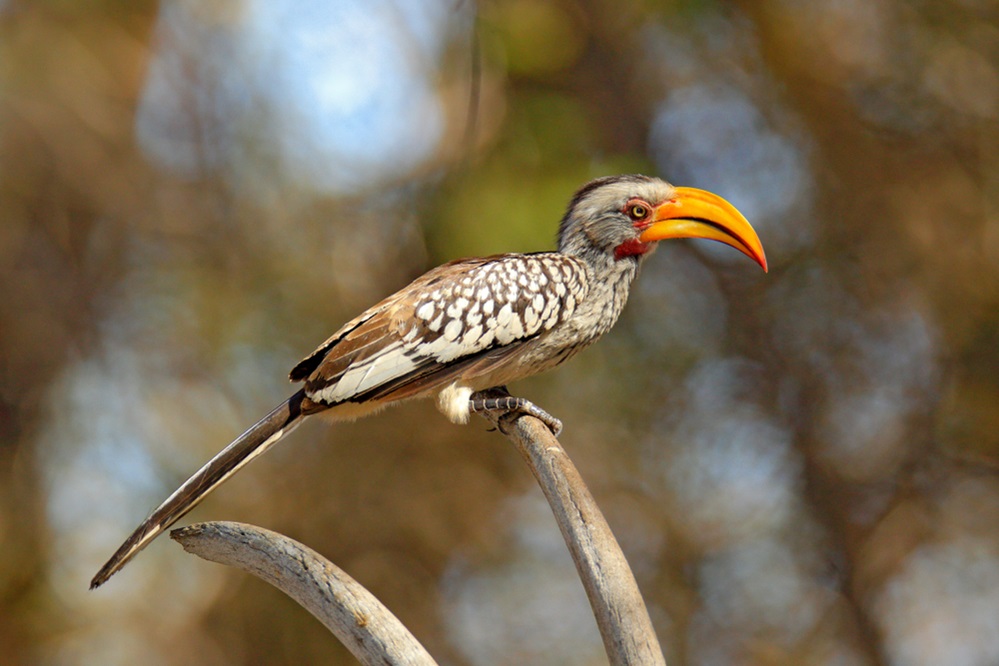
The Yellow-billed Hornbill, scientifically known as Tockus flavirostris, is a charming bird native to Southern Africa, where it inhabits a range of habitats, from woodlands to savannas. It is easily recognized by its striking appearance, featuring a yellow and black beak, a white belly, and a black back with white spots.
These birds are primarily omnivorous, feeding on a variety of insects, fruits, and small vertebrates. Known for their distinct call, which resembles a cackling laugh,
Yellow-billed Hornbills are also famous for their unique nesting habits. They seal the female inside a tree cavity during the nesting period, leaving only a small slit through which the male feeds her and the chicks, providing a fascinating insight into their intriguing behaviors.
Zanzibar Red Colobus

Endemic to Zanzibar, the Zanzibar red colobus monkey is a stunning and endangered primate clinging to survival in the archipelago’s dwindling forests. These arboreal acrobats, with their distinctive reddish-brown fur and long black tails, are social creatures living in troops of up to 50 individuals.
Unlike most colobus monkeys, they lack thumbs, but compensate with remarkable dexterity using their long, grasping feet. Primarily leaf-eaters, their diet includes a surprising addition – charcoal. Scientists believe this unusual behavior helps them digest toxins found in certain leaves, a testament to their remarkable adaptation.
Zebra

The zebra is a striking and iconic animal known for its distinctive black and white striped coat. These equids, native to Africa, are highly social creatures, often found in herds grazing on grasslands.
Zebras are known for their unique defense mechanism called “confusion camouflage,” where the stripes make it difficult for predators to single out an individual zebra in a herd. Despite their wild appearance, zebras are herbivores, feeding primarily on grasses and occasionally leaves, twigs, and bark.
Their stripes are as unique as fingerprints, with no two zebras having the same pattern. Zebras communicate through various vocalizations, as well as facial expressions and body movements, playing a crucial role in their social structure and hierarchy.
Zorilla
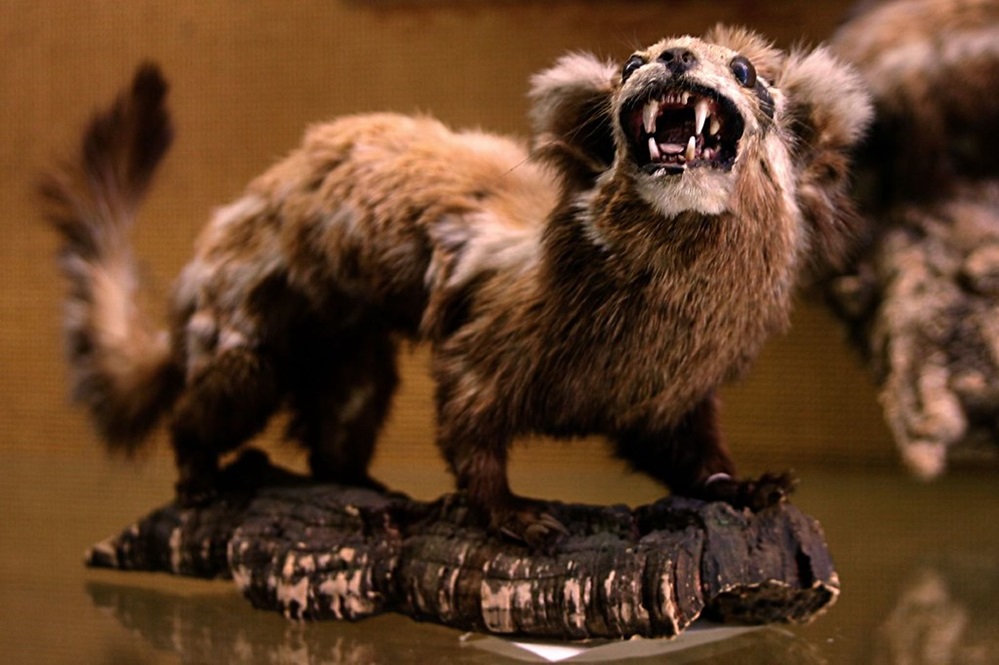
The Zorilla, also known as the African Striped Polecat, is a small carnivorous mammal native to Africa. It is known for its striking appearance, with a black body featuring white stripes along its sides and back. Despite its name, the Zorilla is not closely related to the true polecats. It is a solitary and nocturnal animal, preferring to hunt at night for small prey such as insects, rodents, and birds.
The Zorilla is also known for its defensive behavior, as it can emit a foul-smelling odor from its anal glands when threatened, similar to a skunk. This defensive mechanism serves as a warning to potential predators, making the Zorilla a fascinating and unique creature in the African wilderness.

